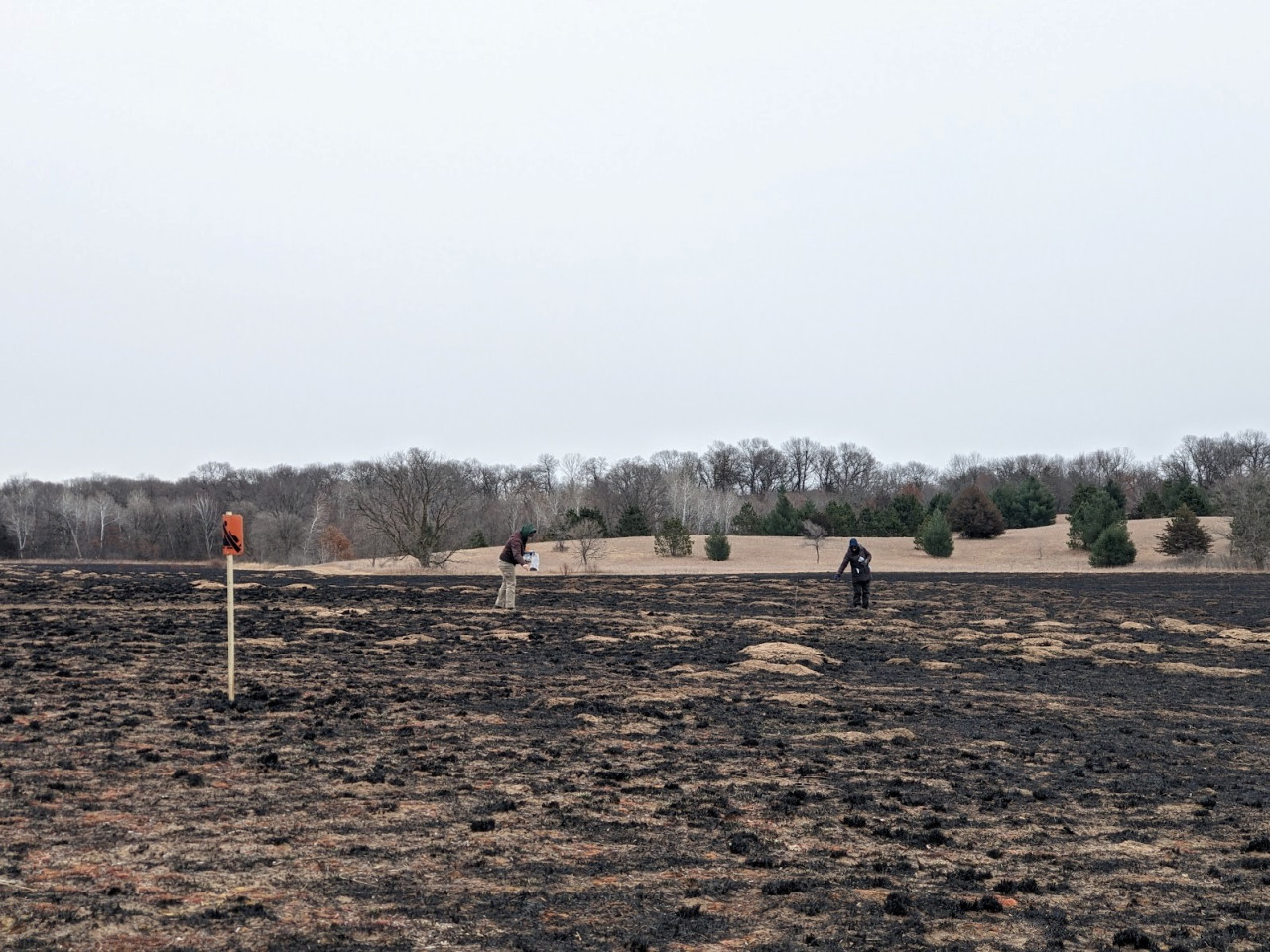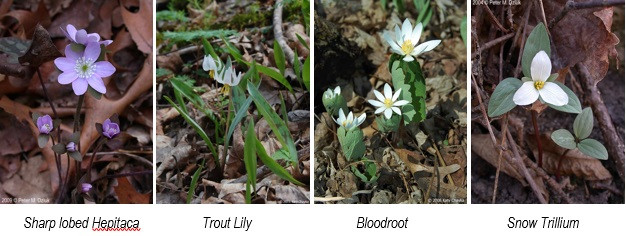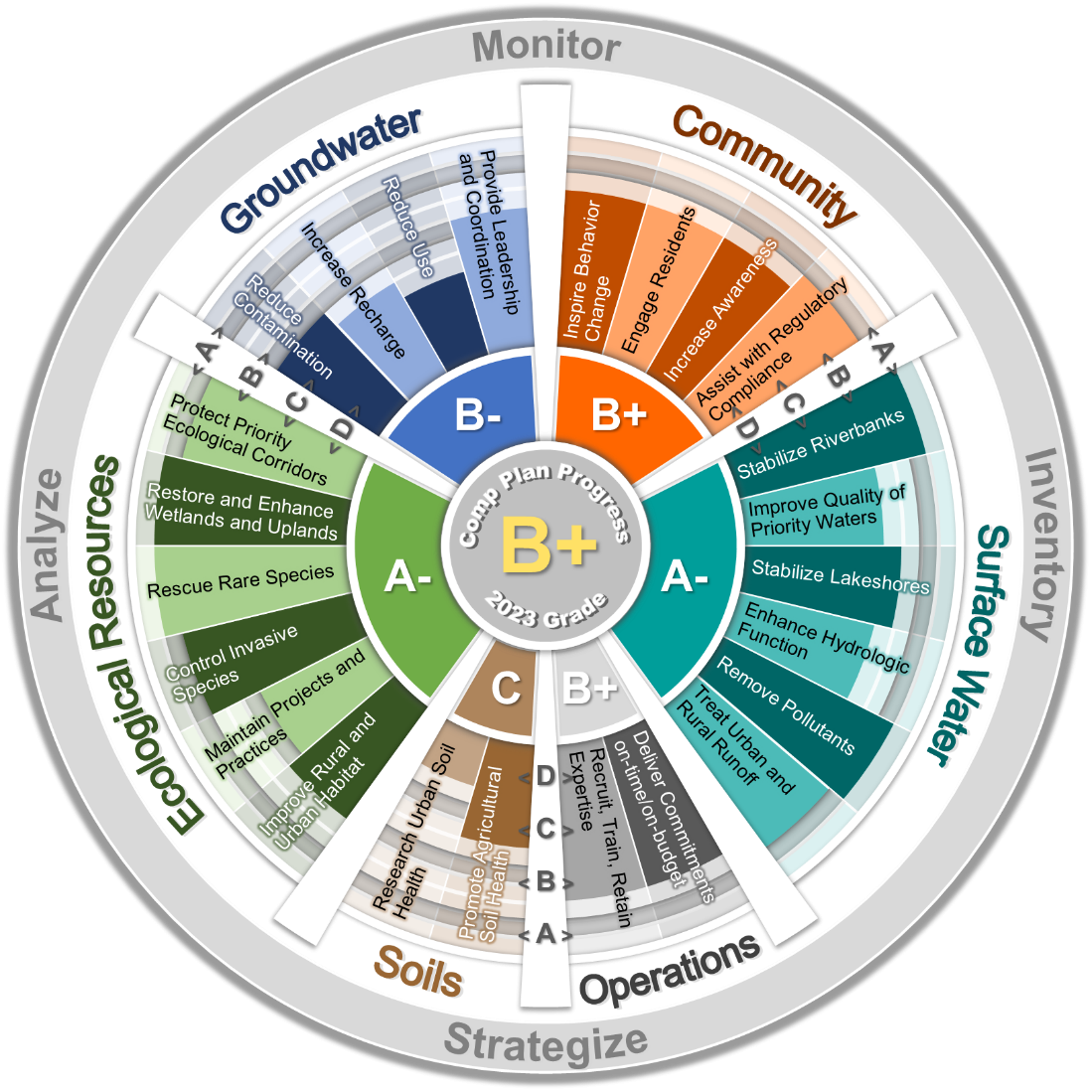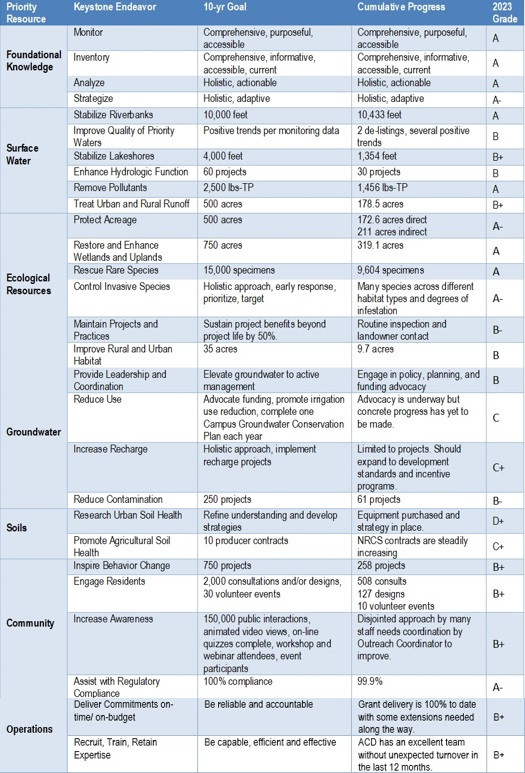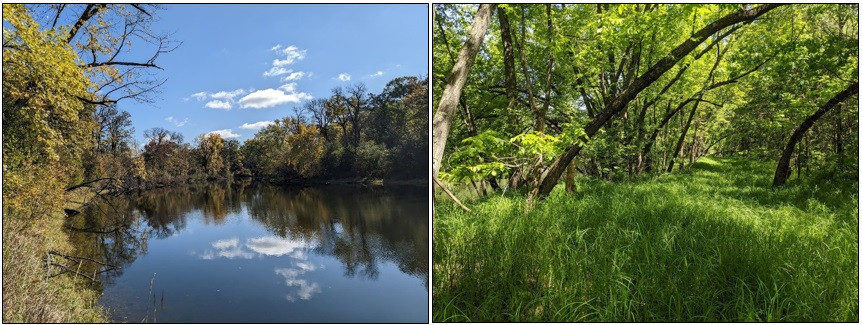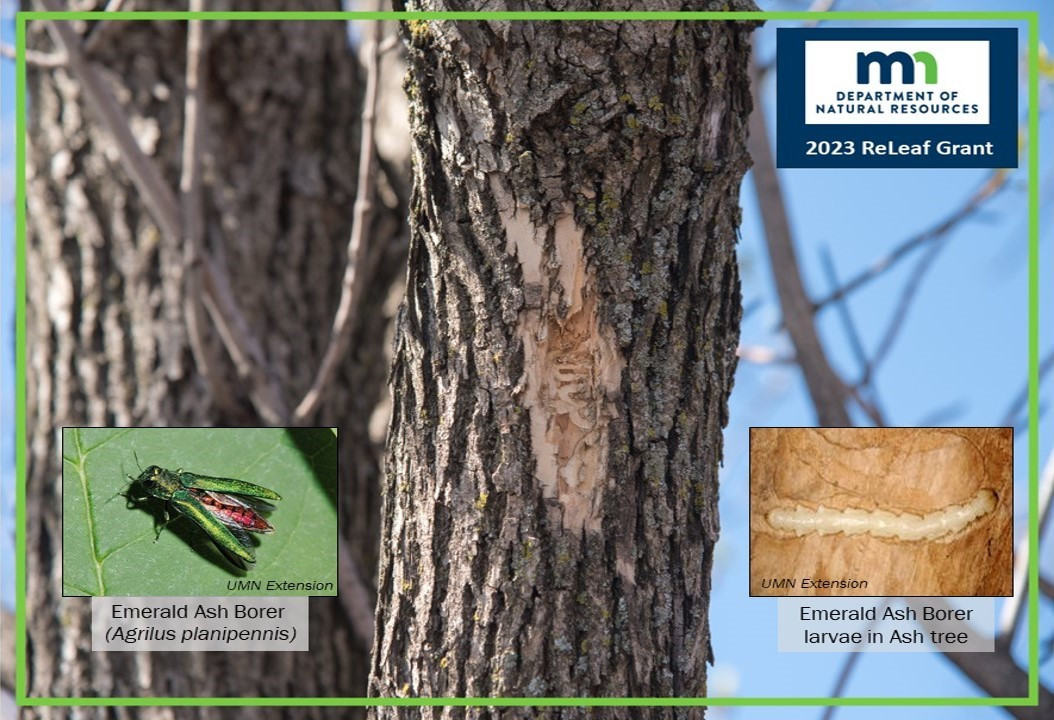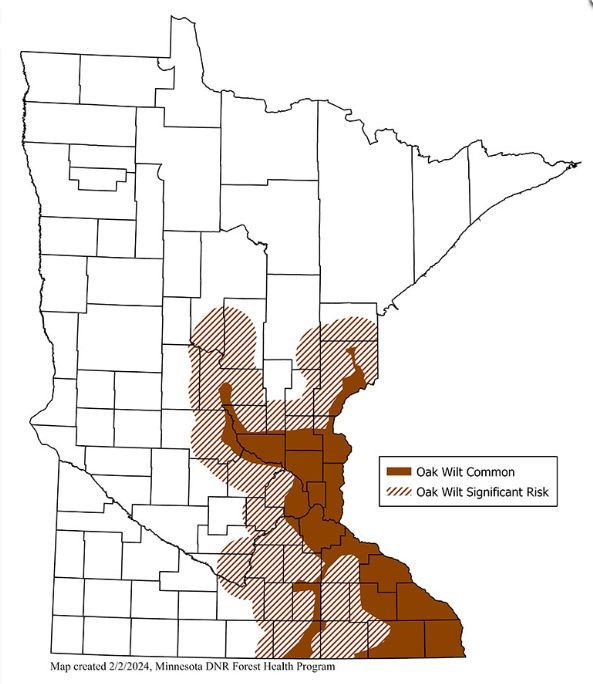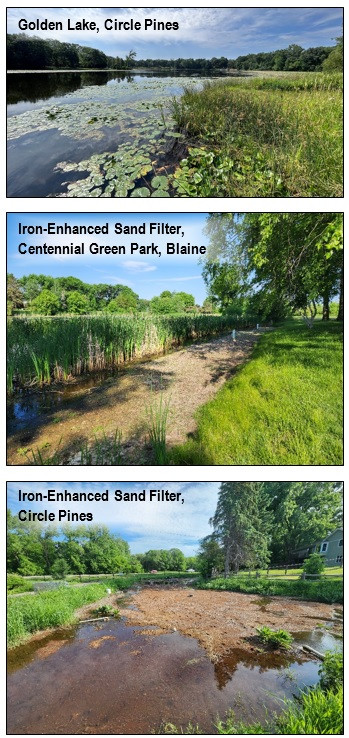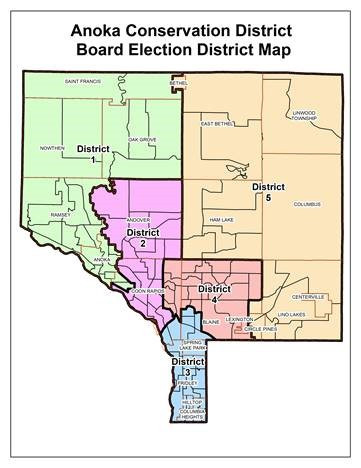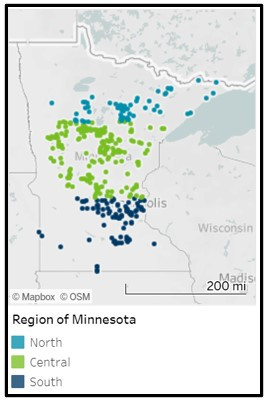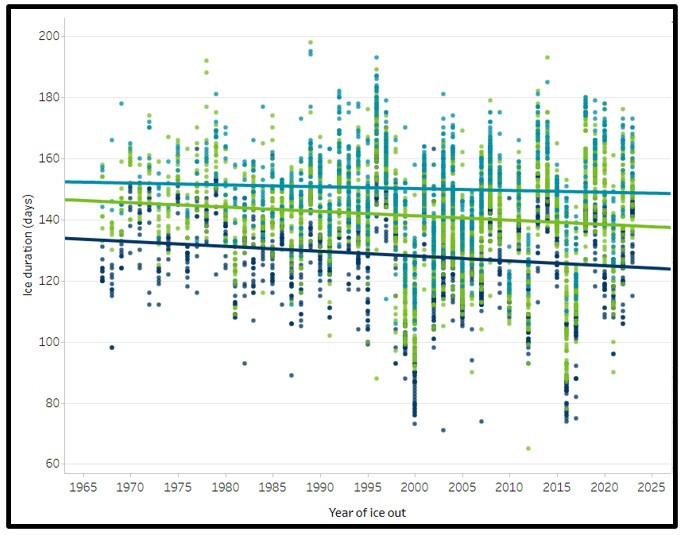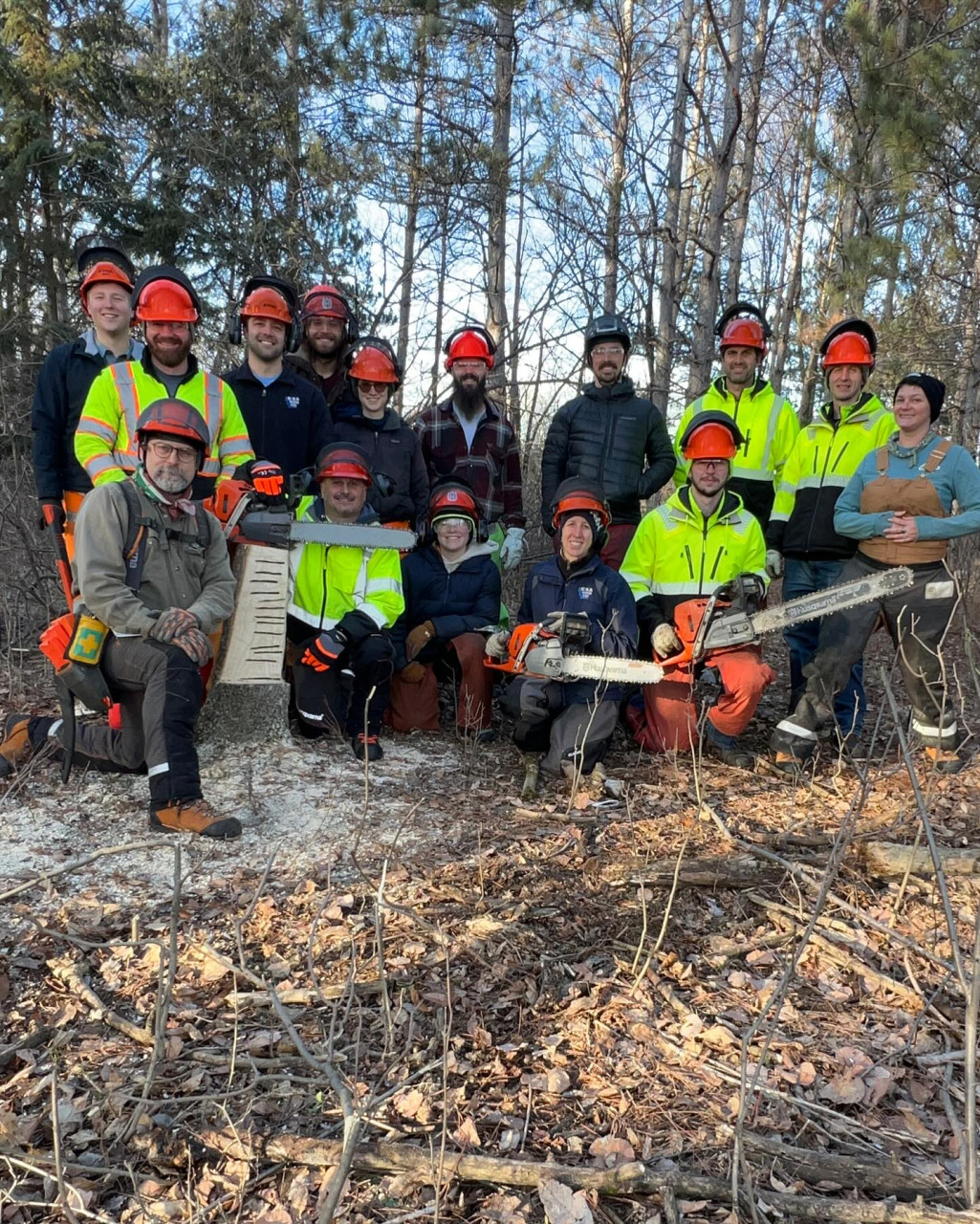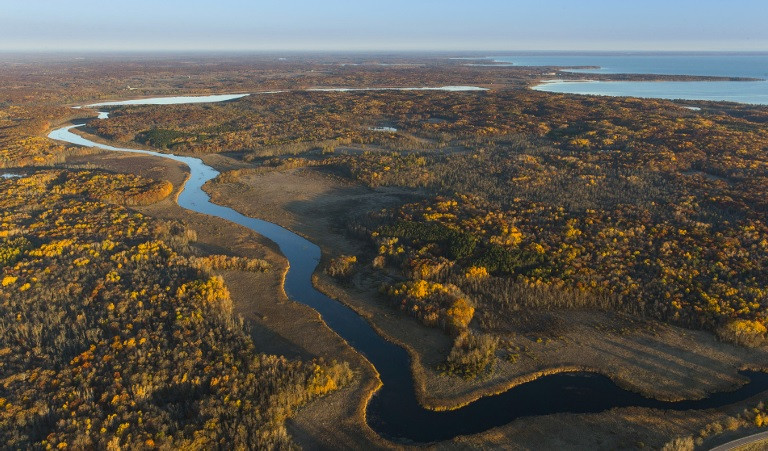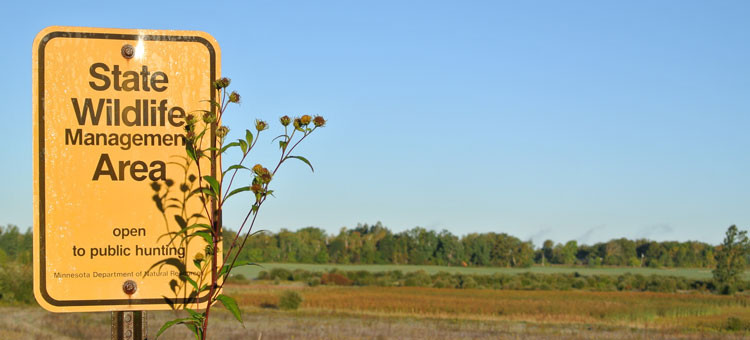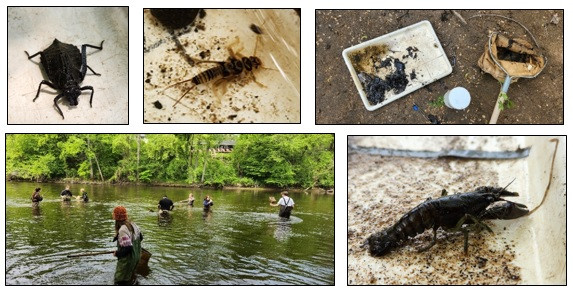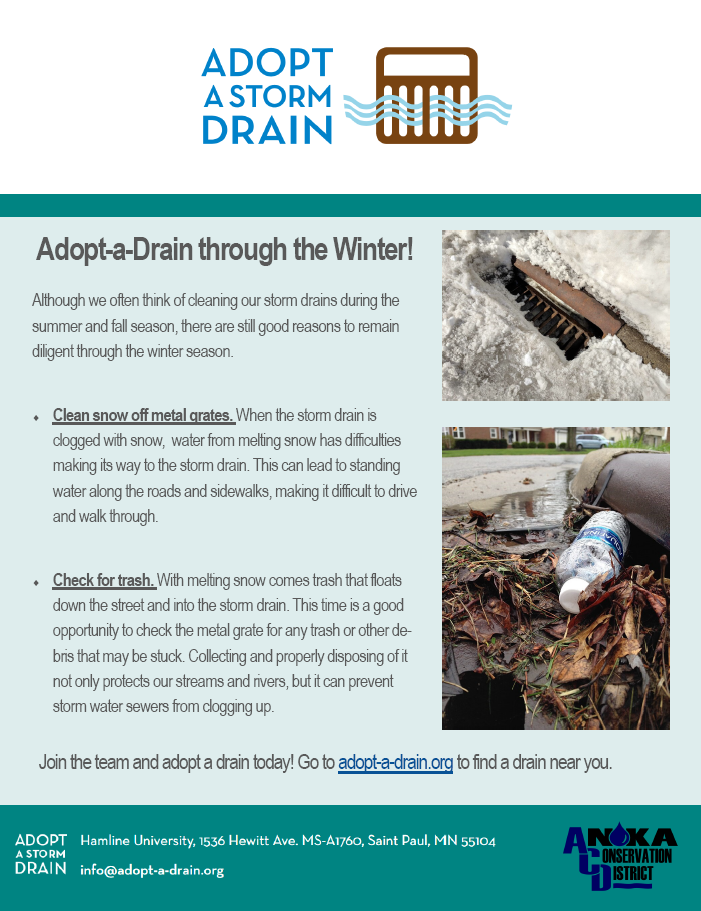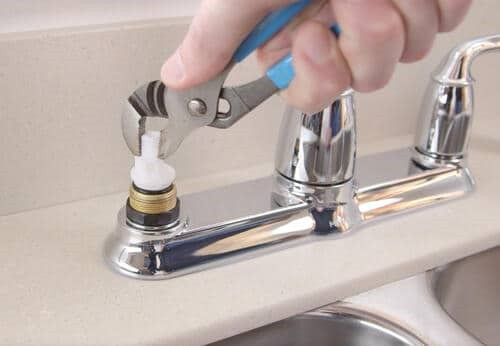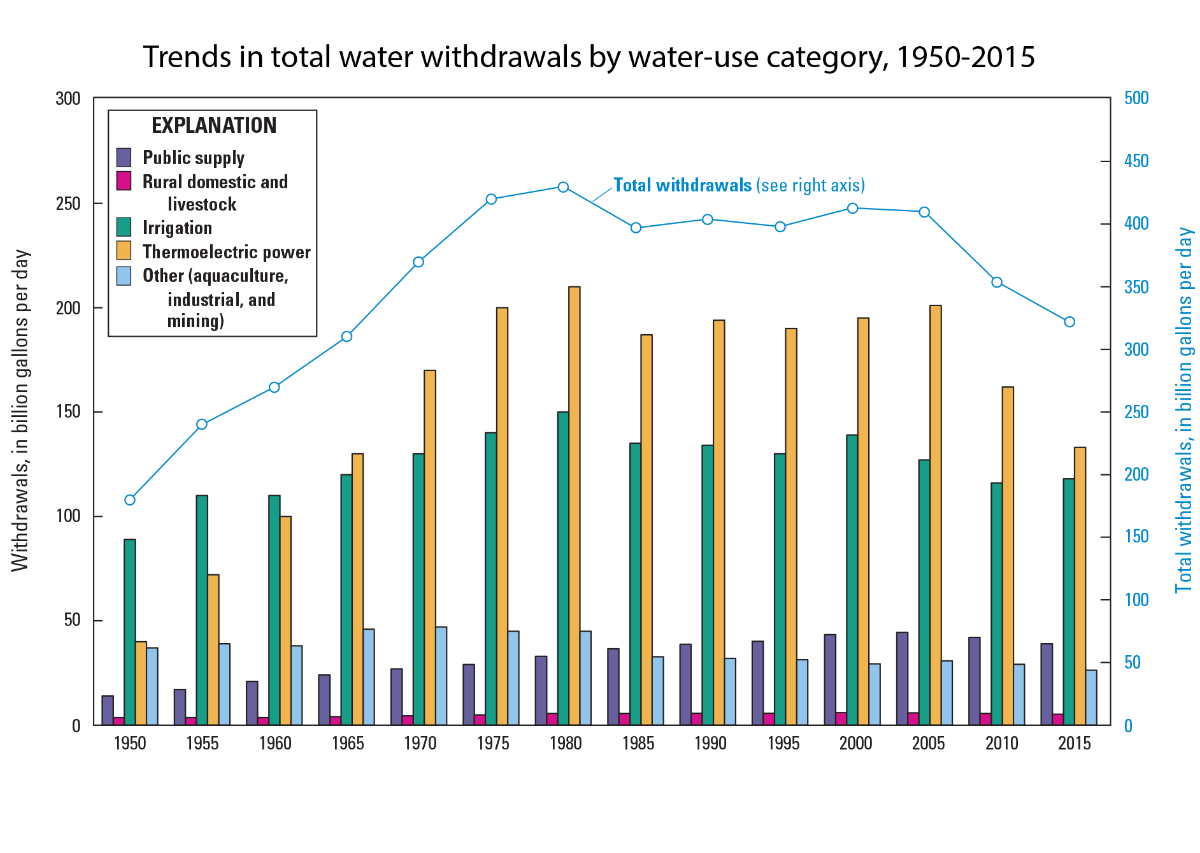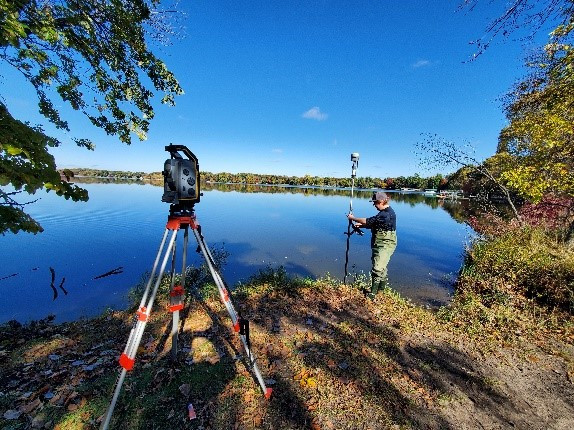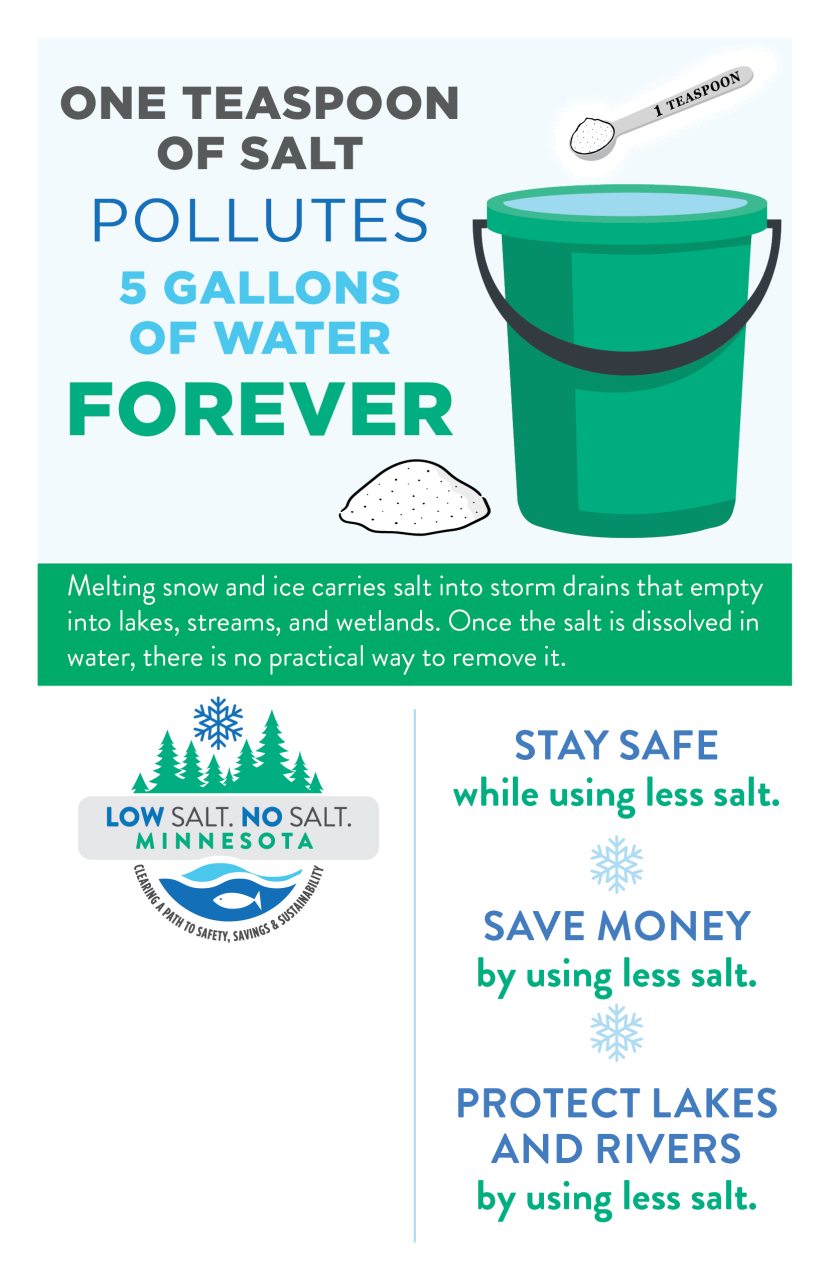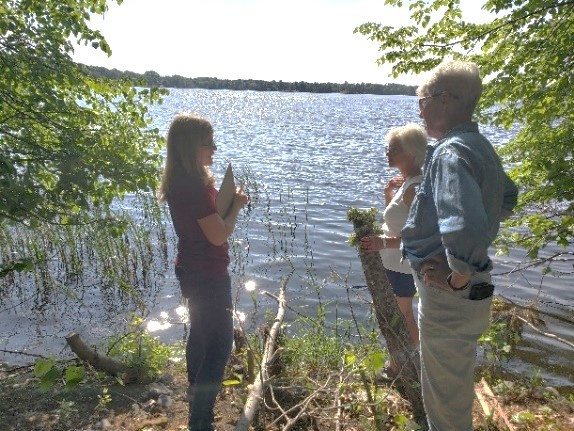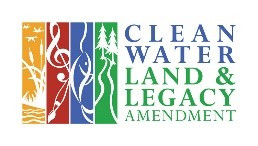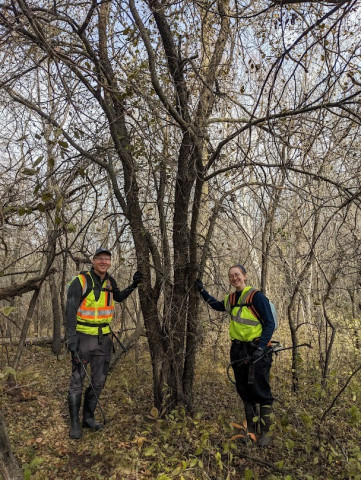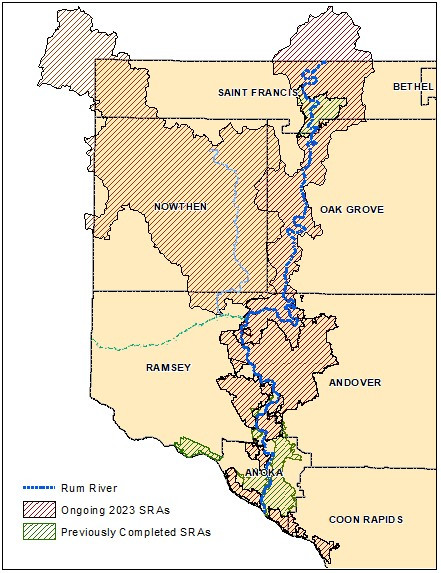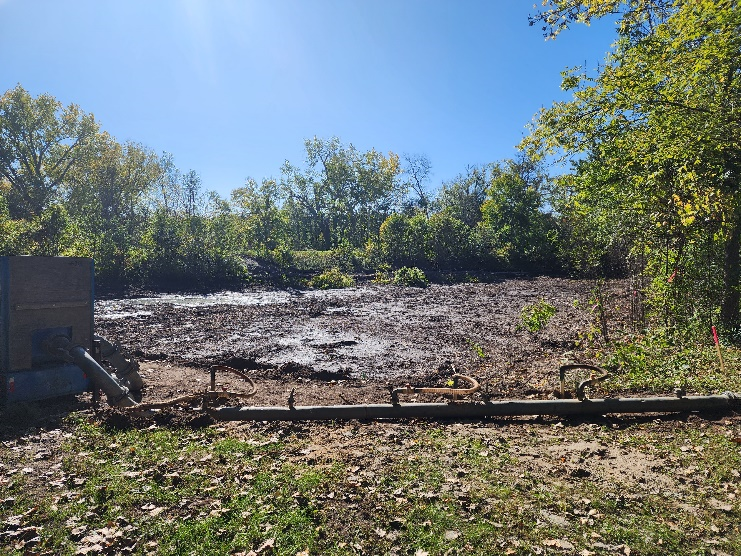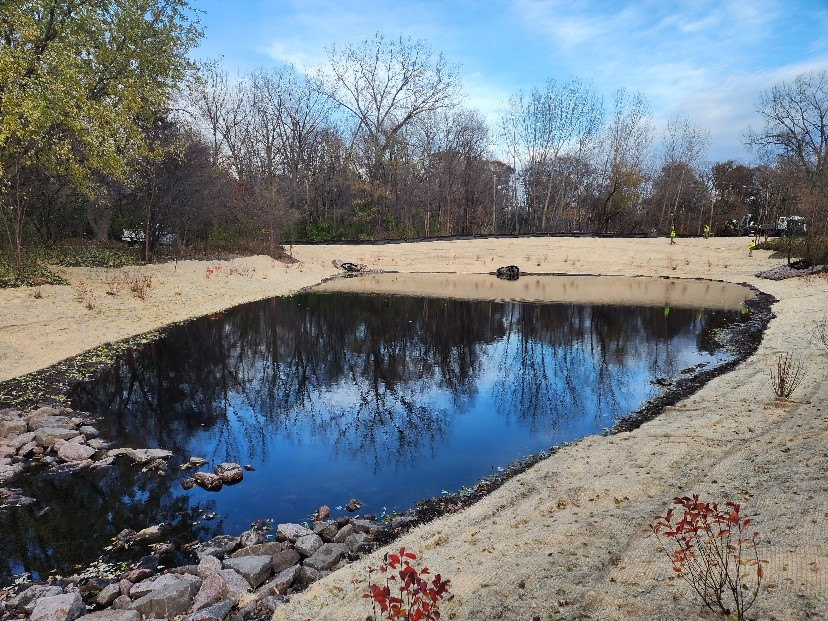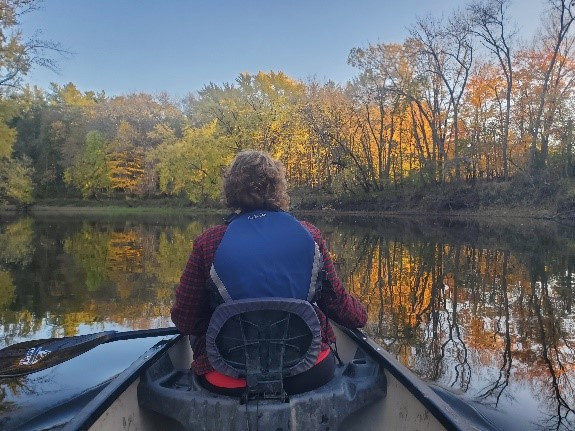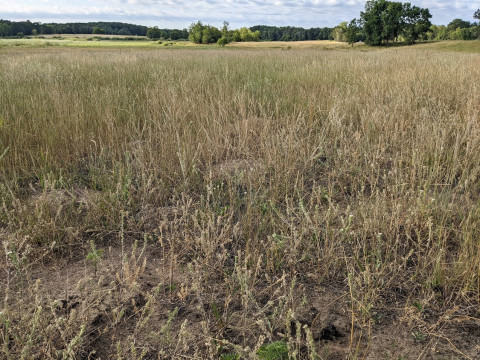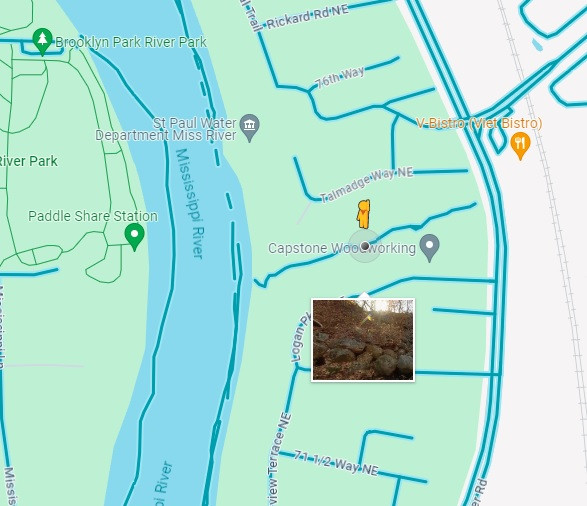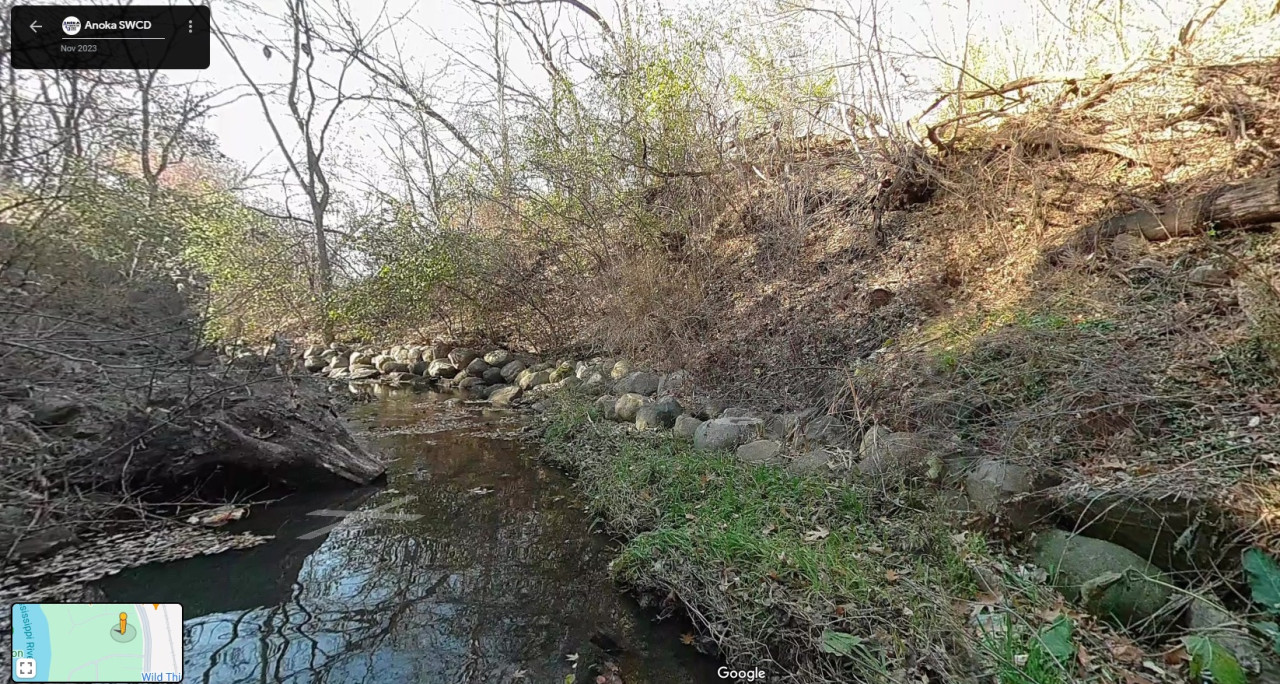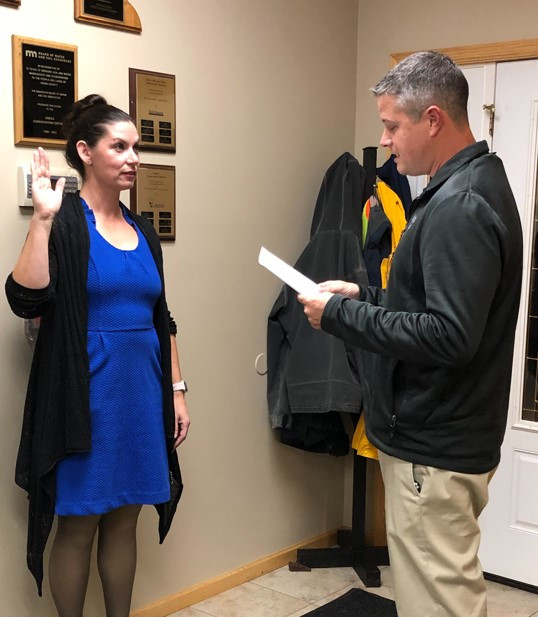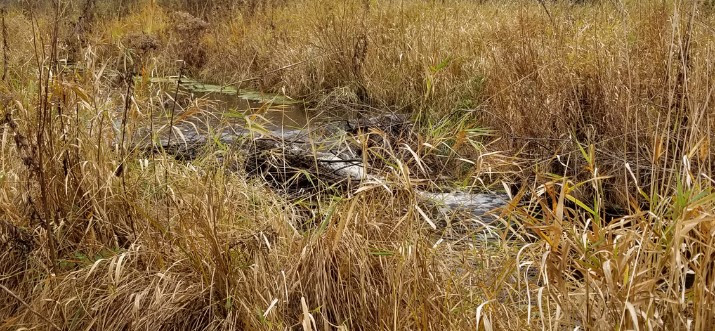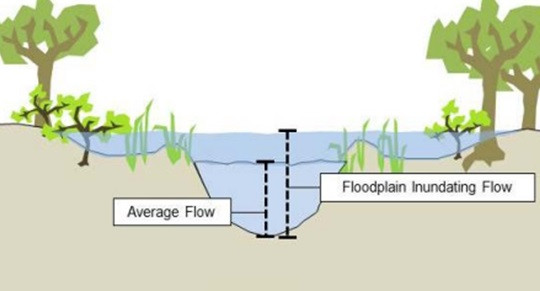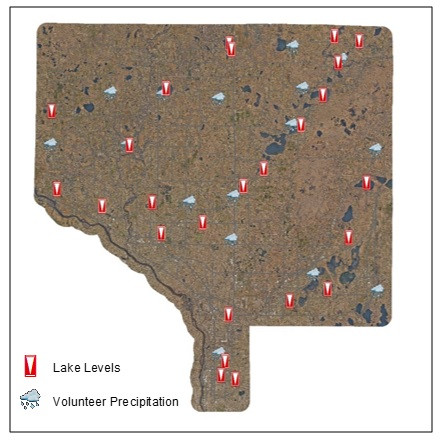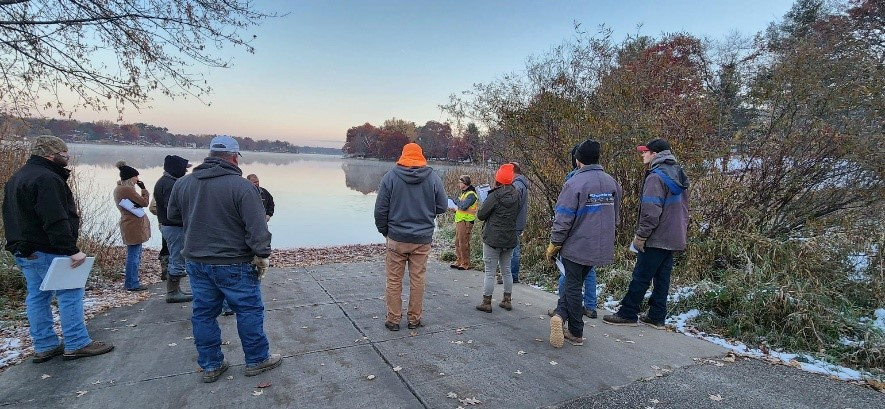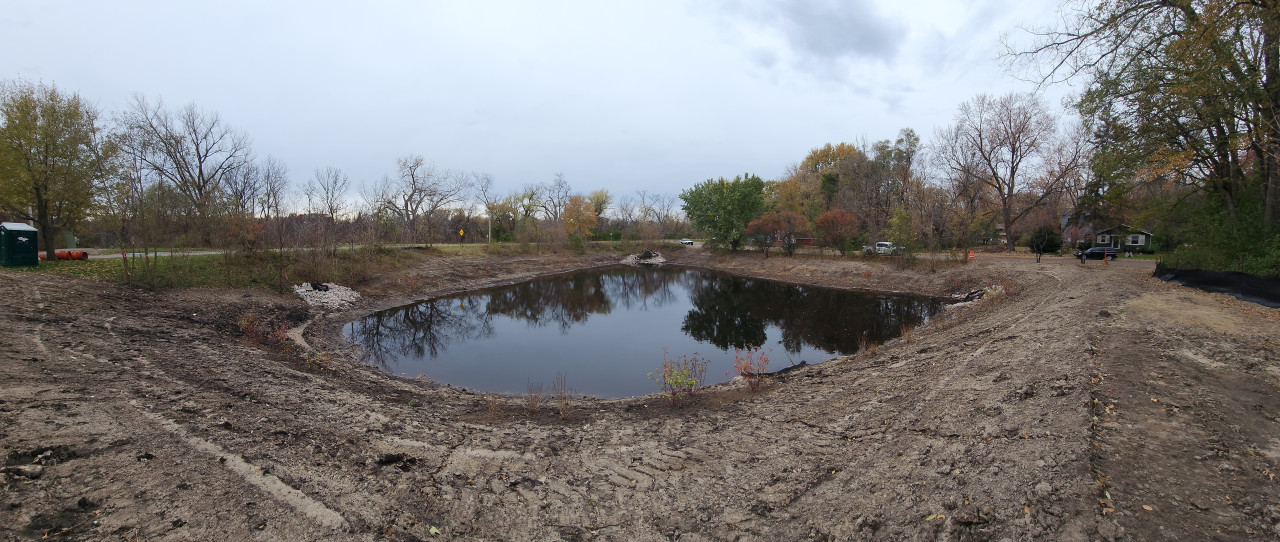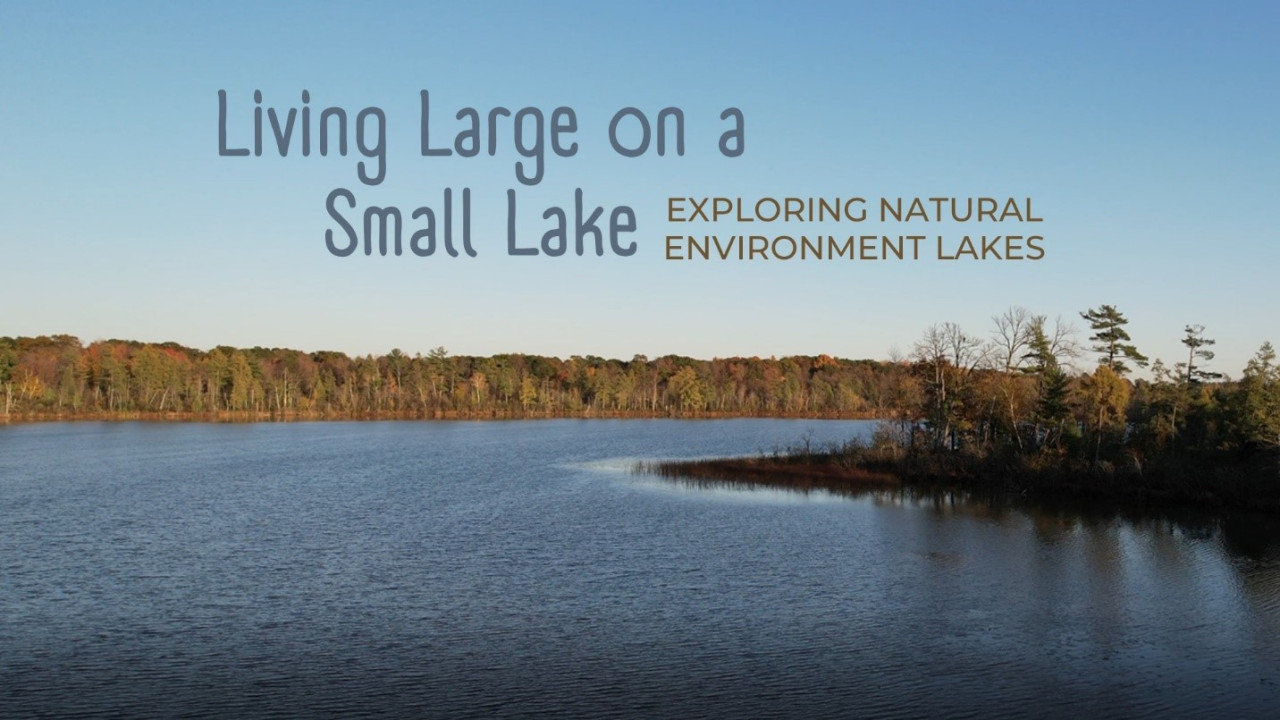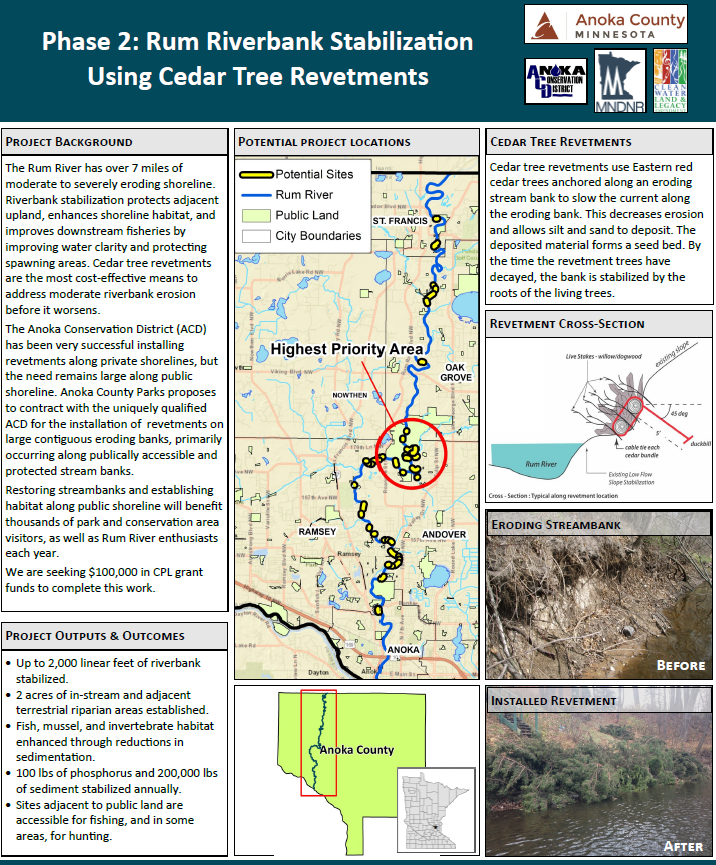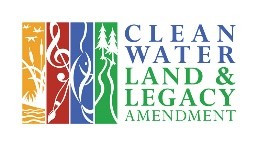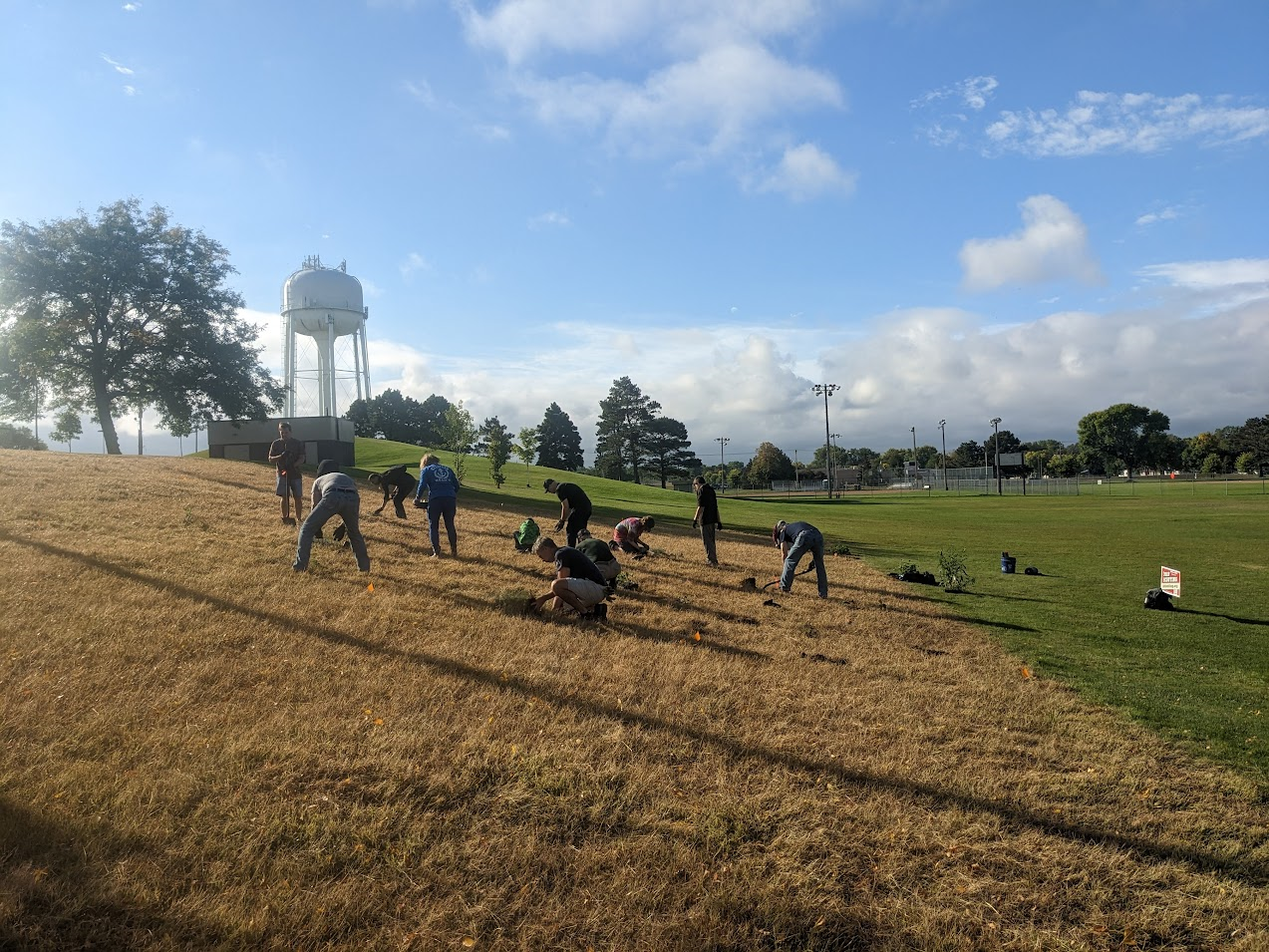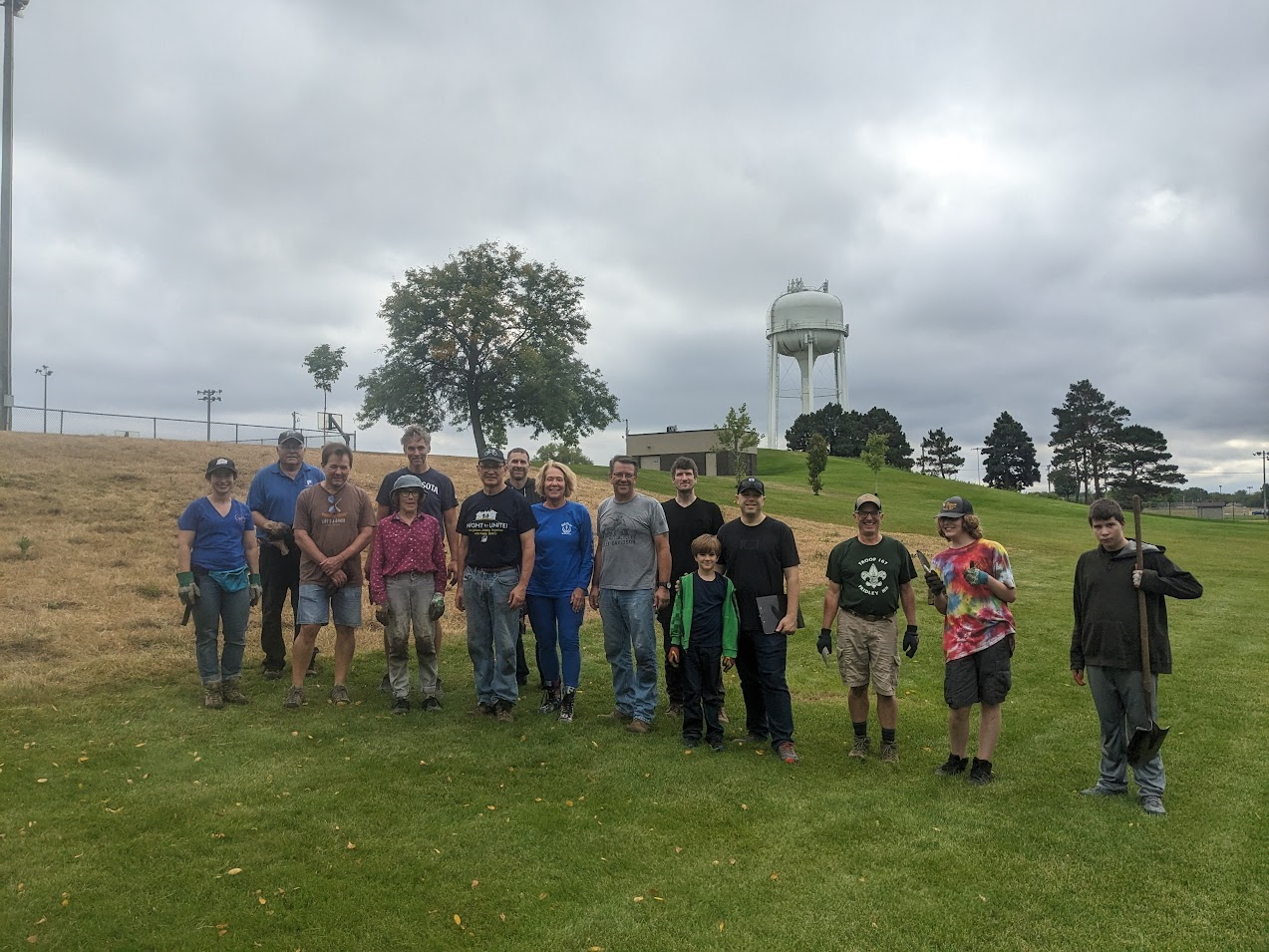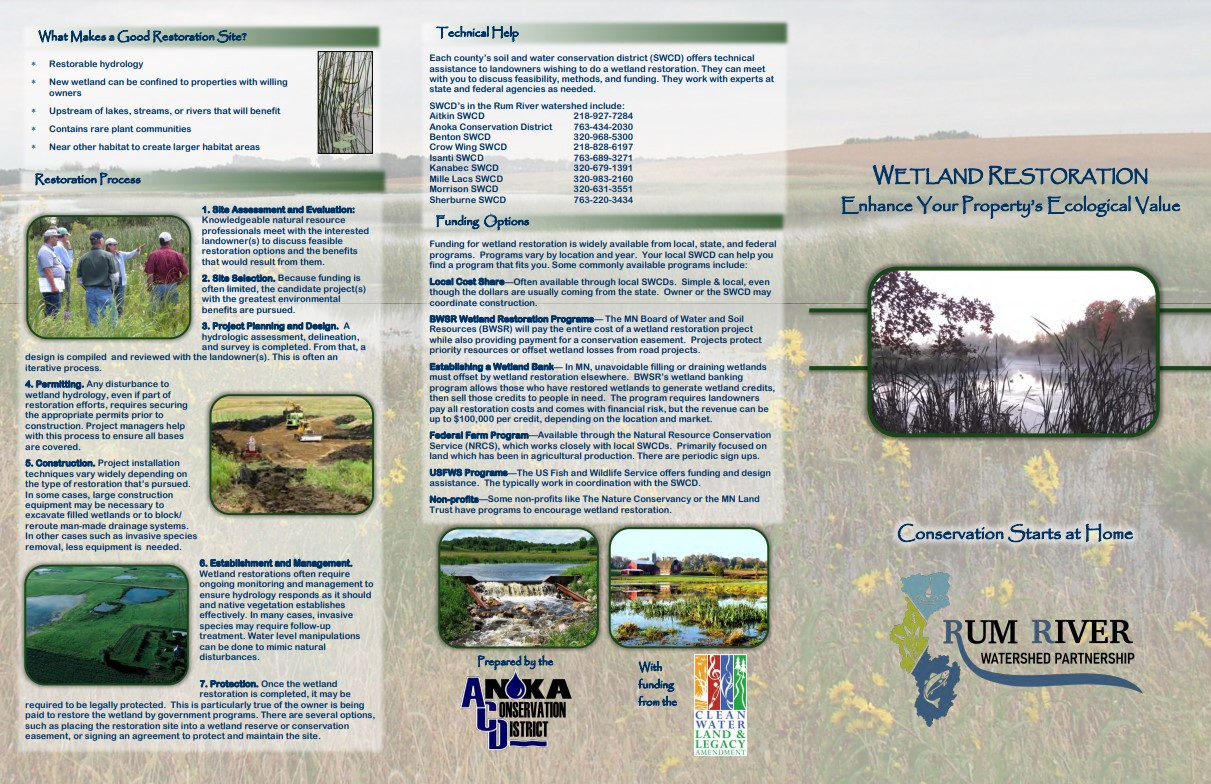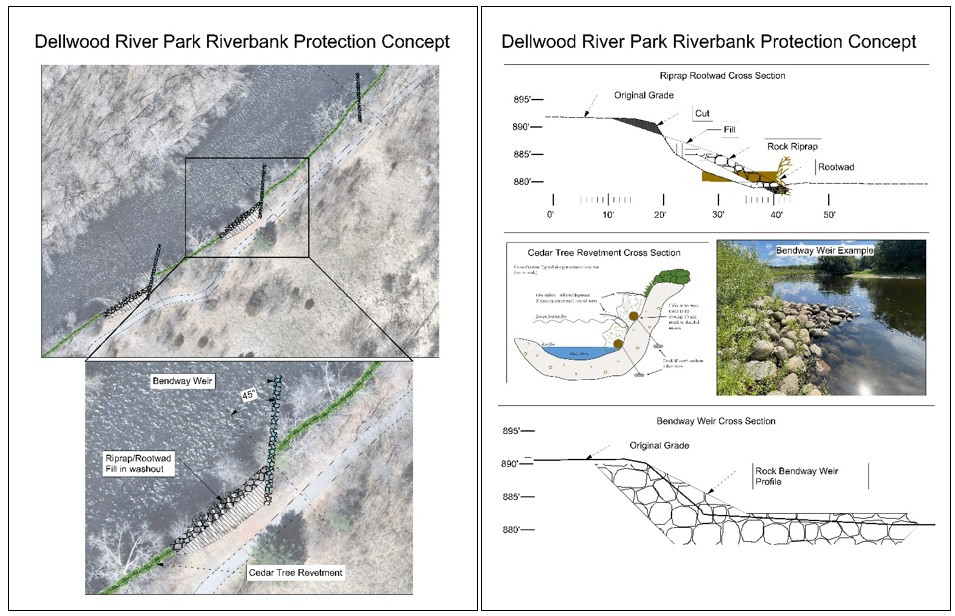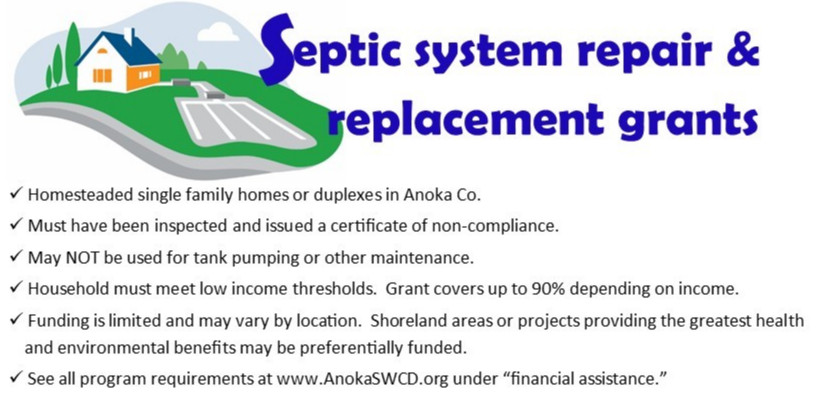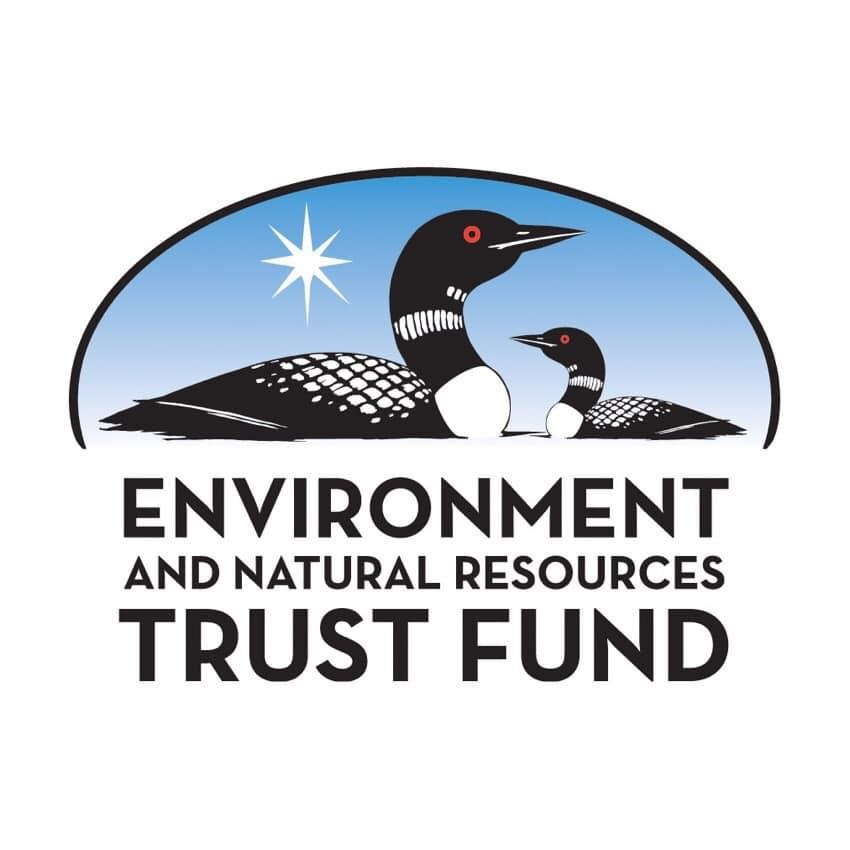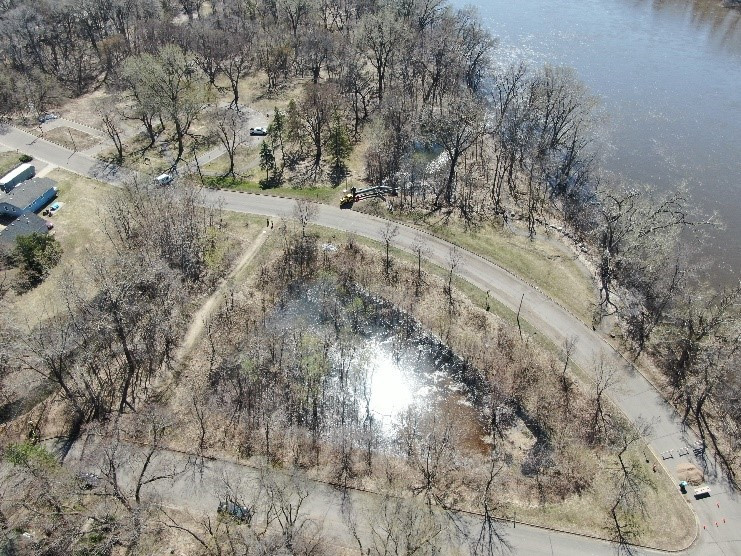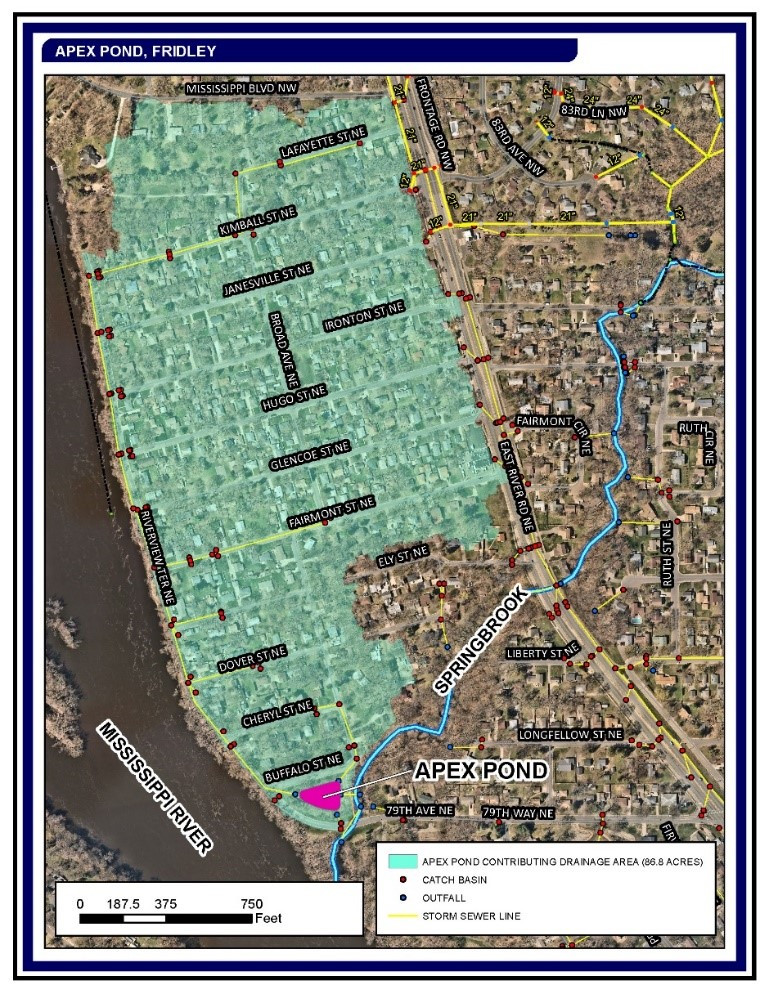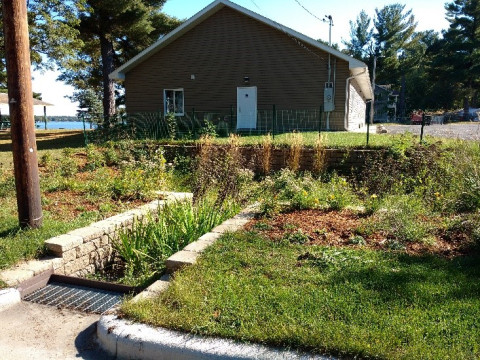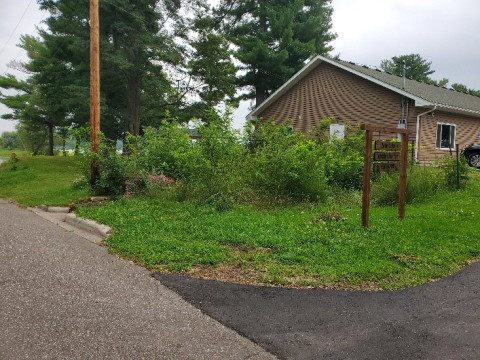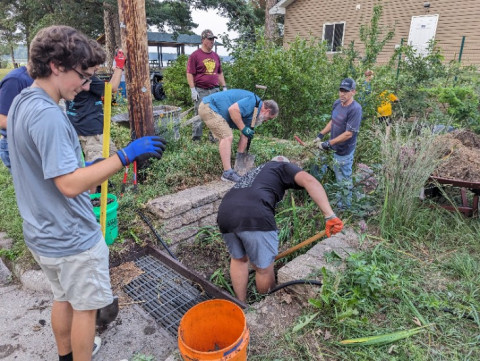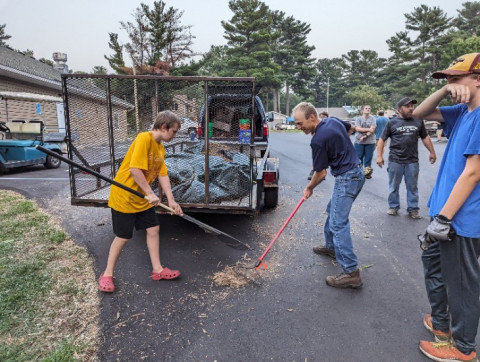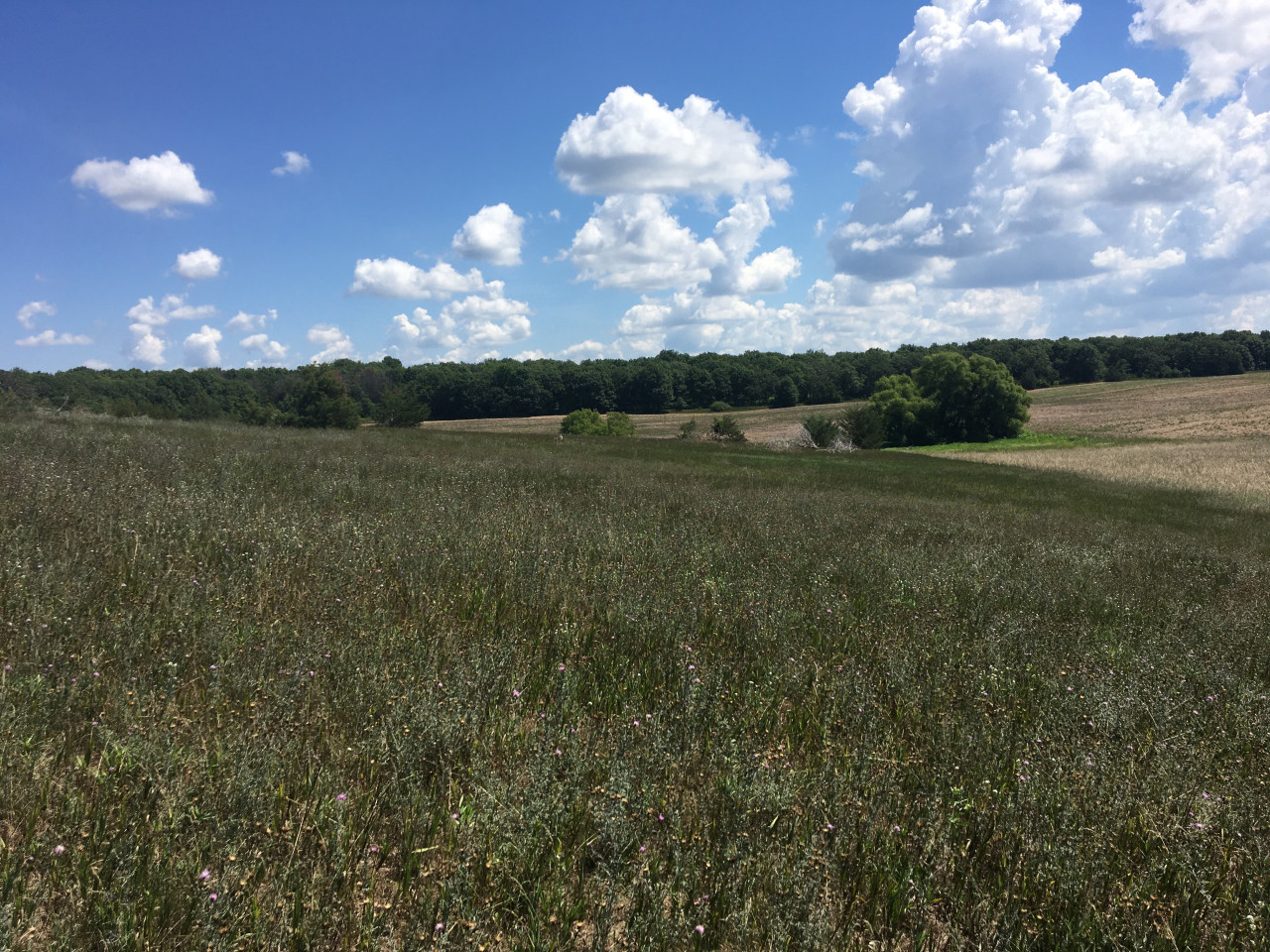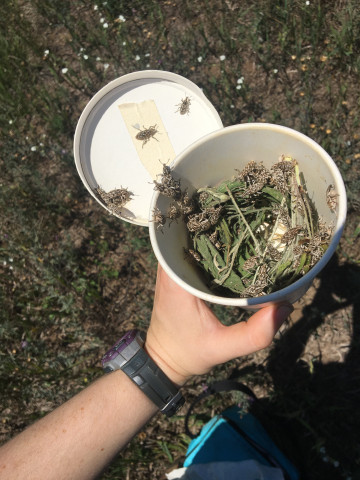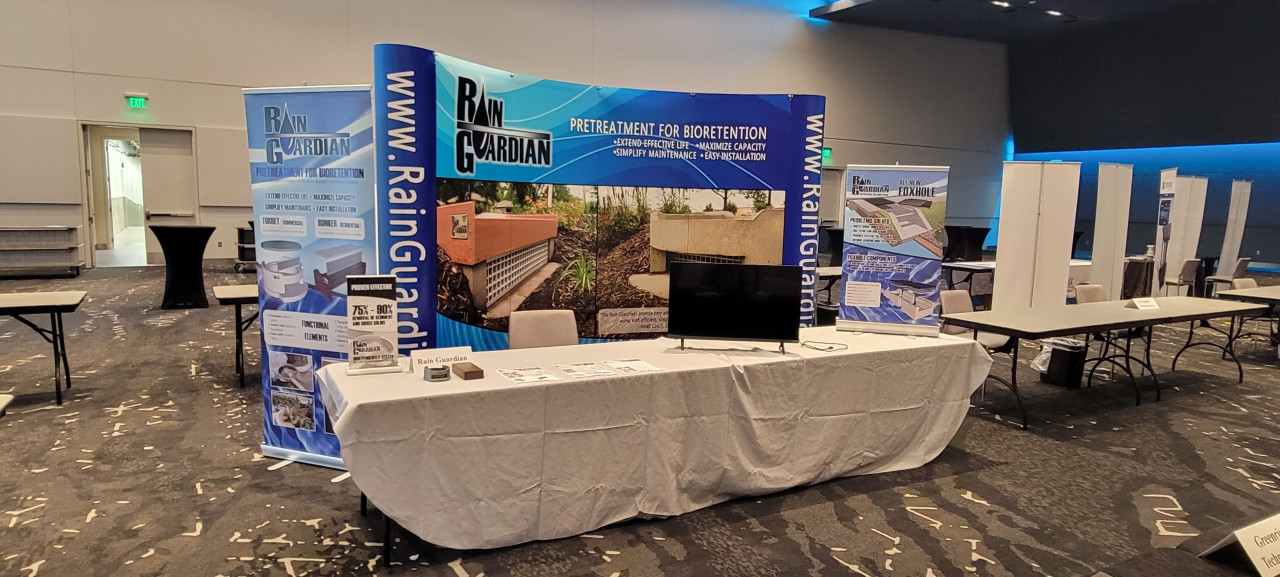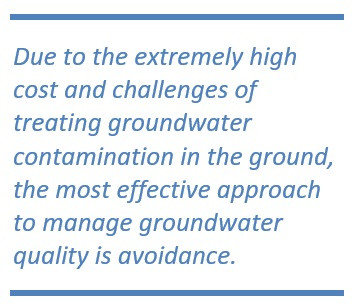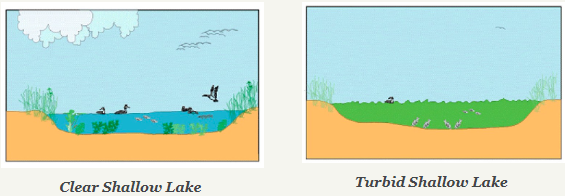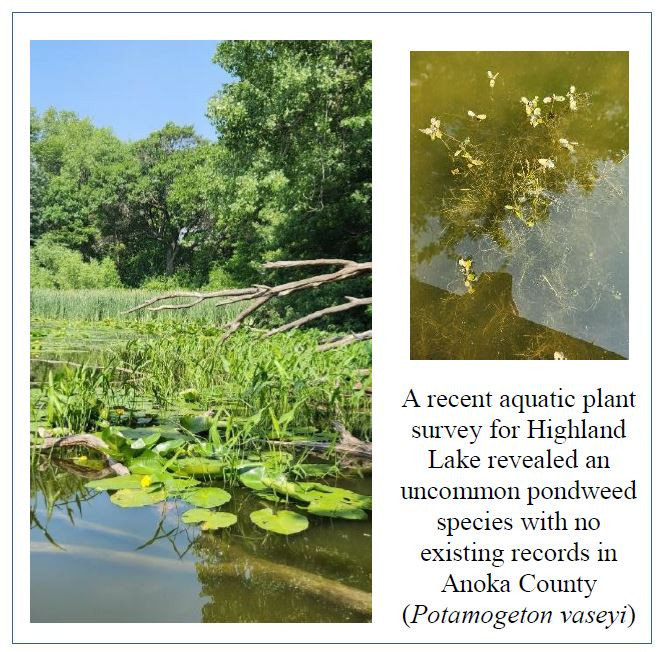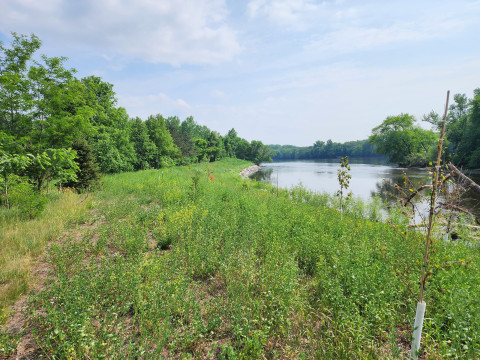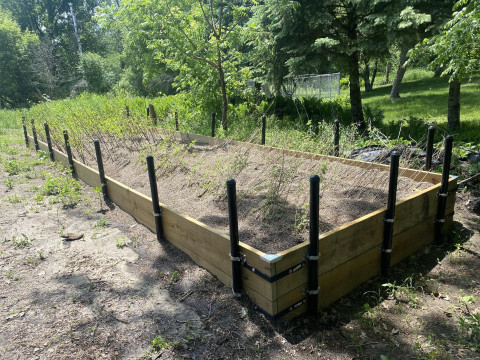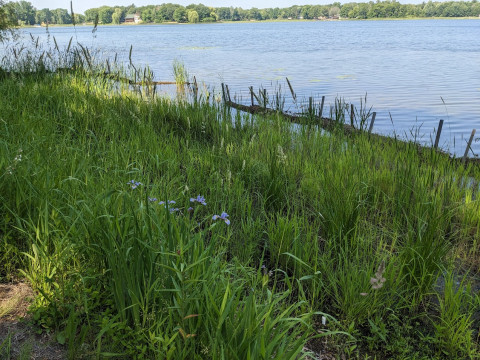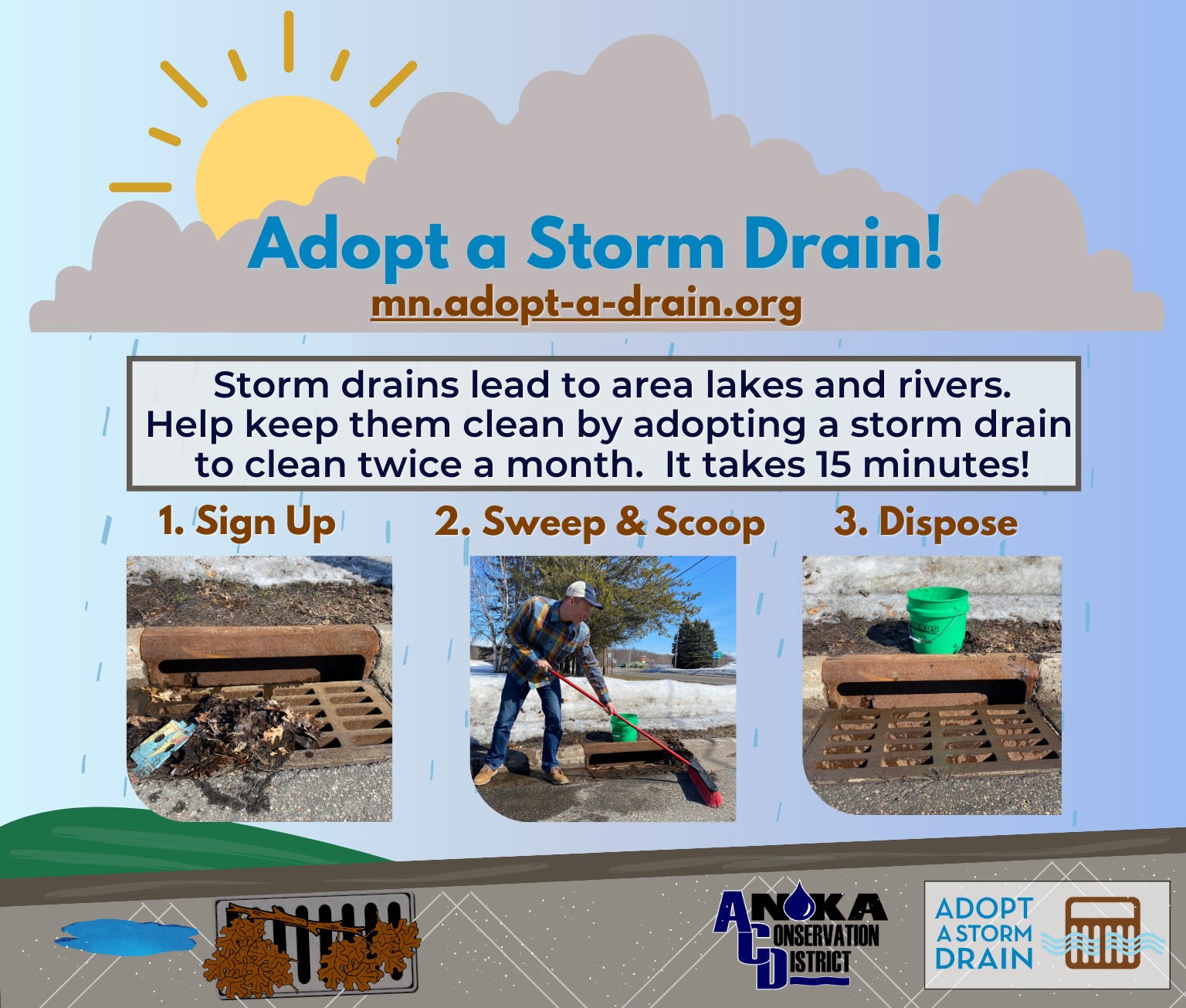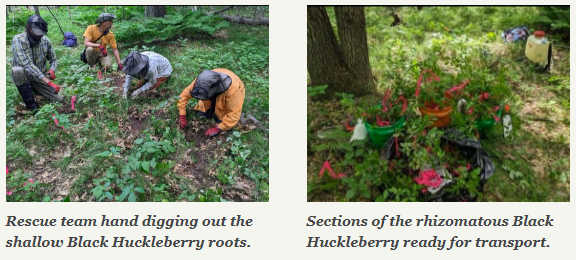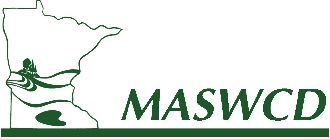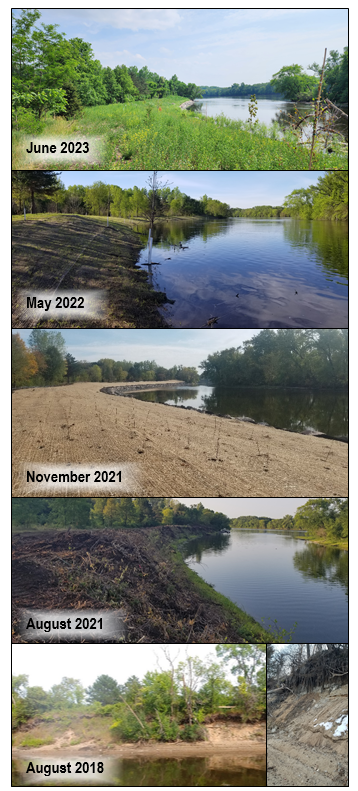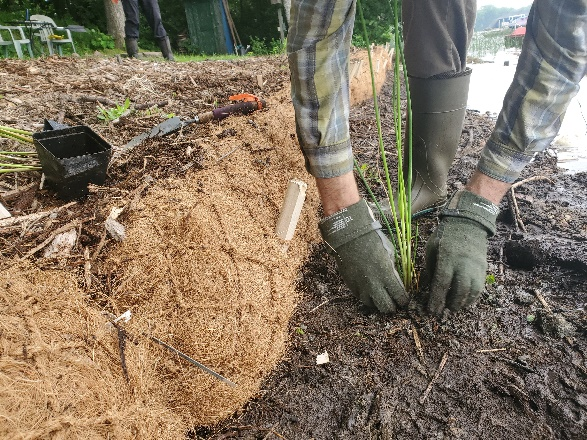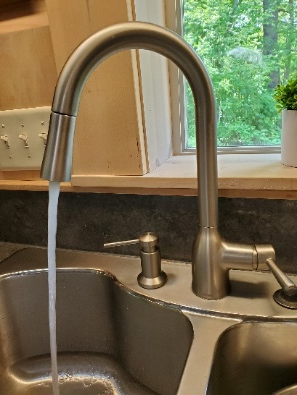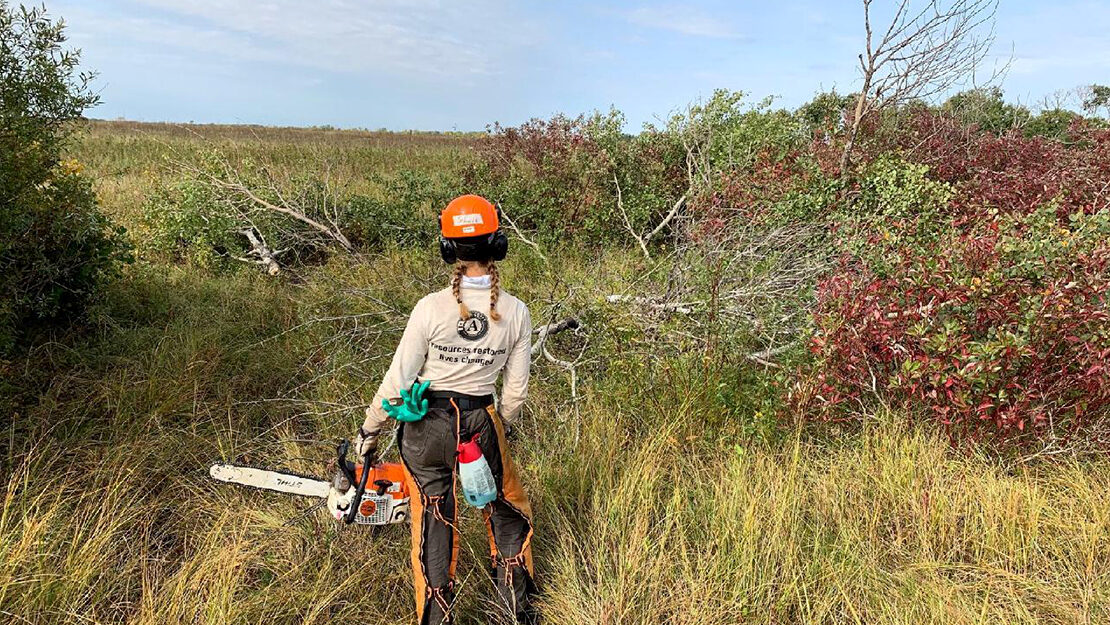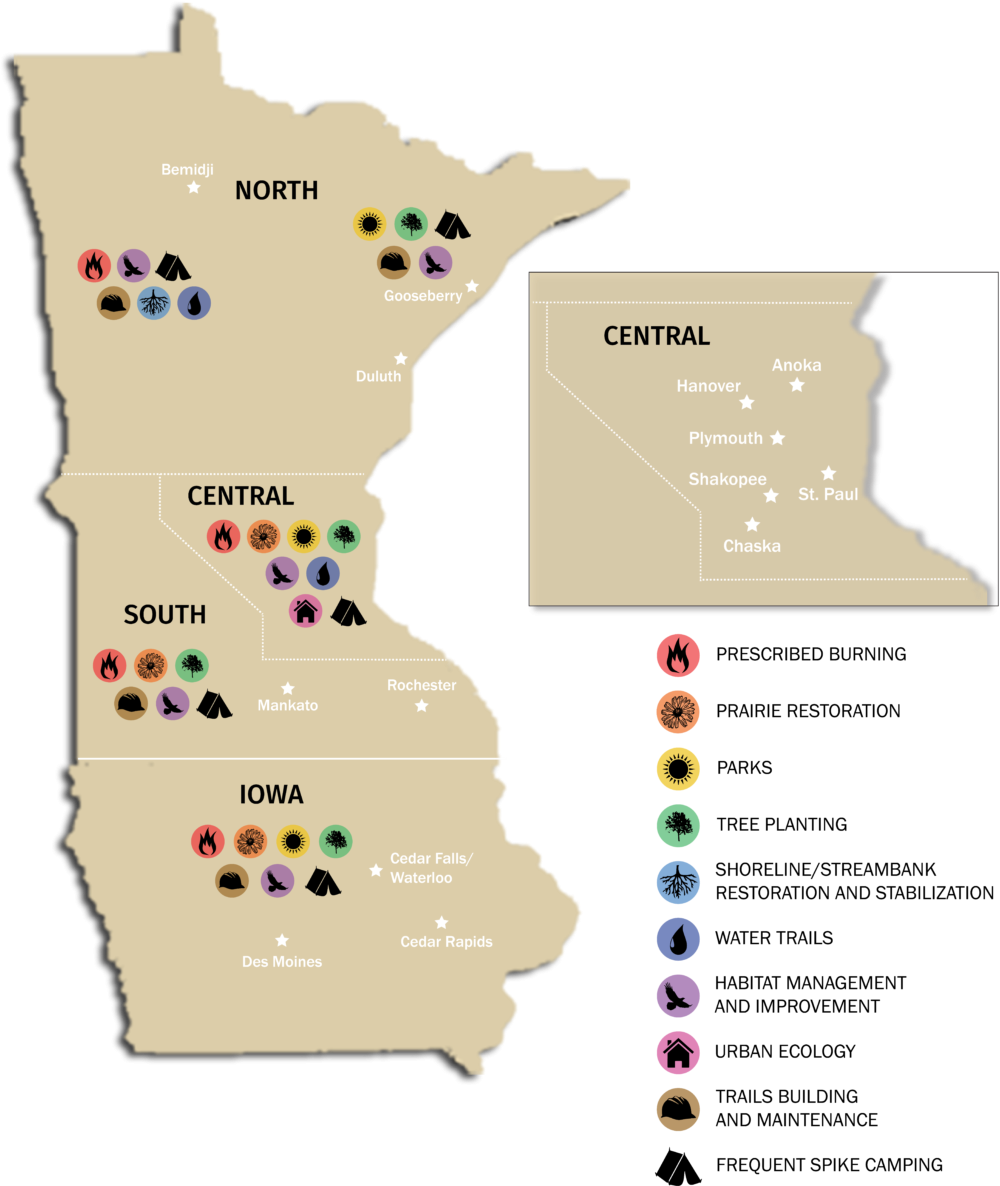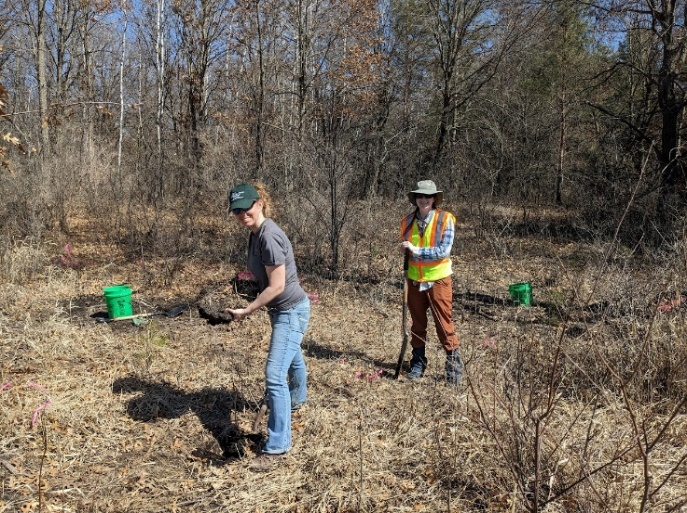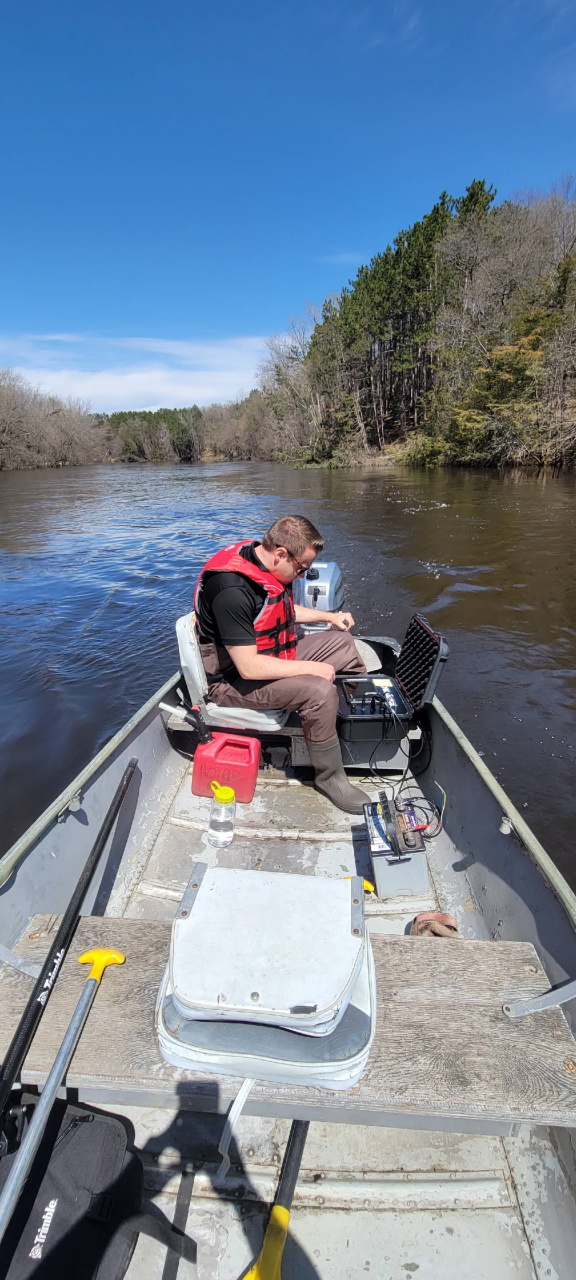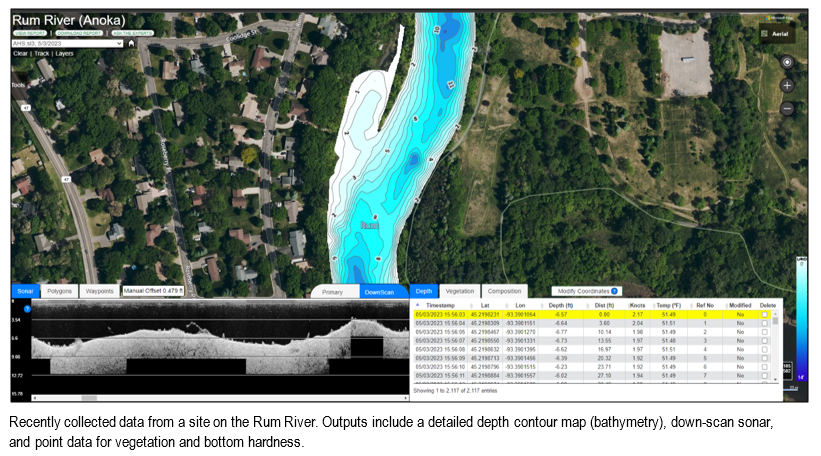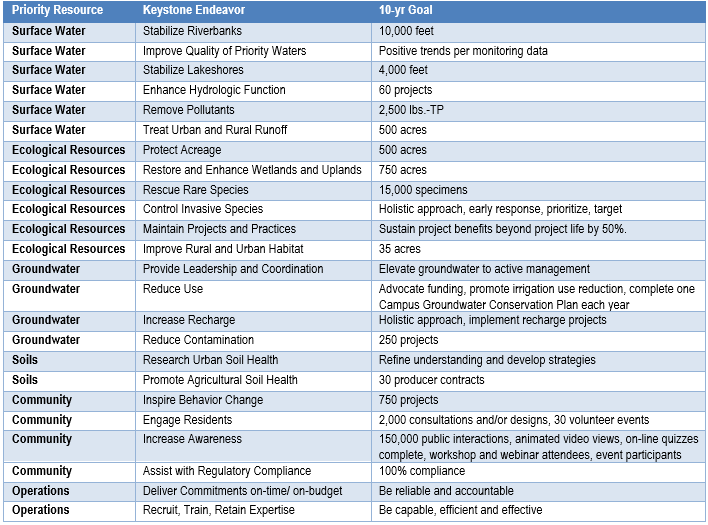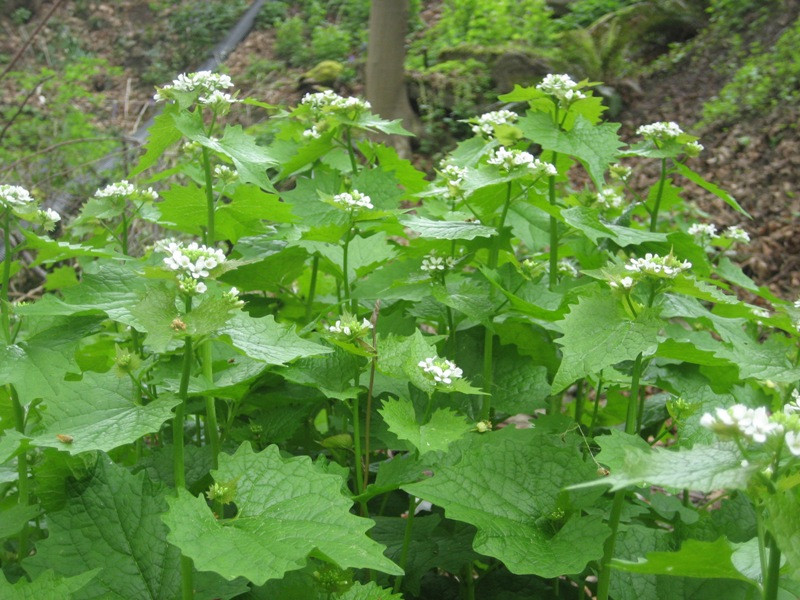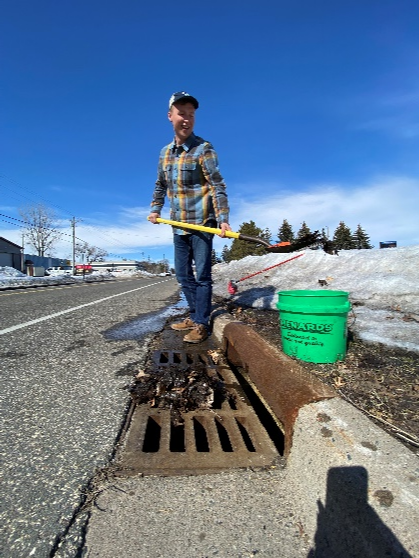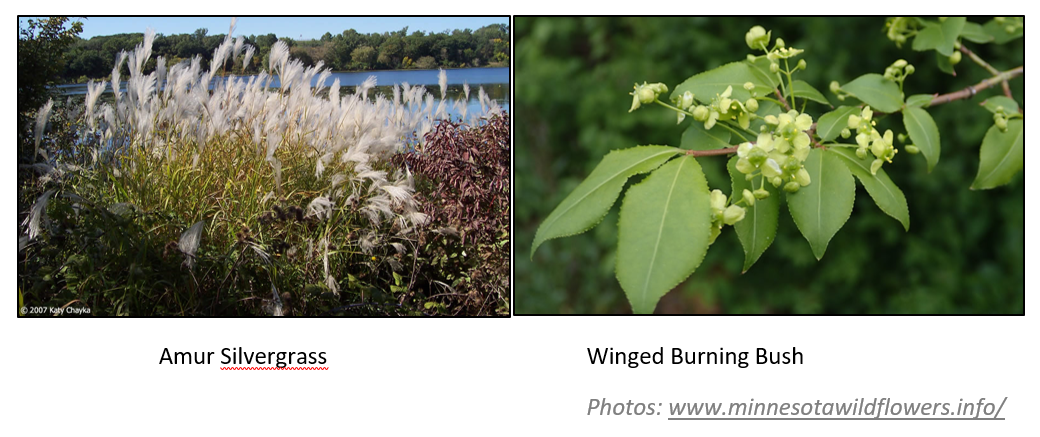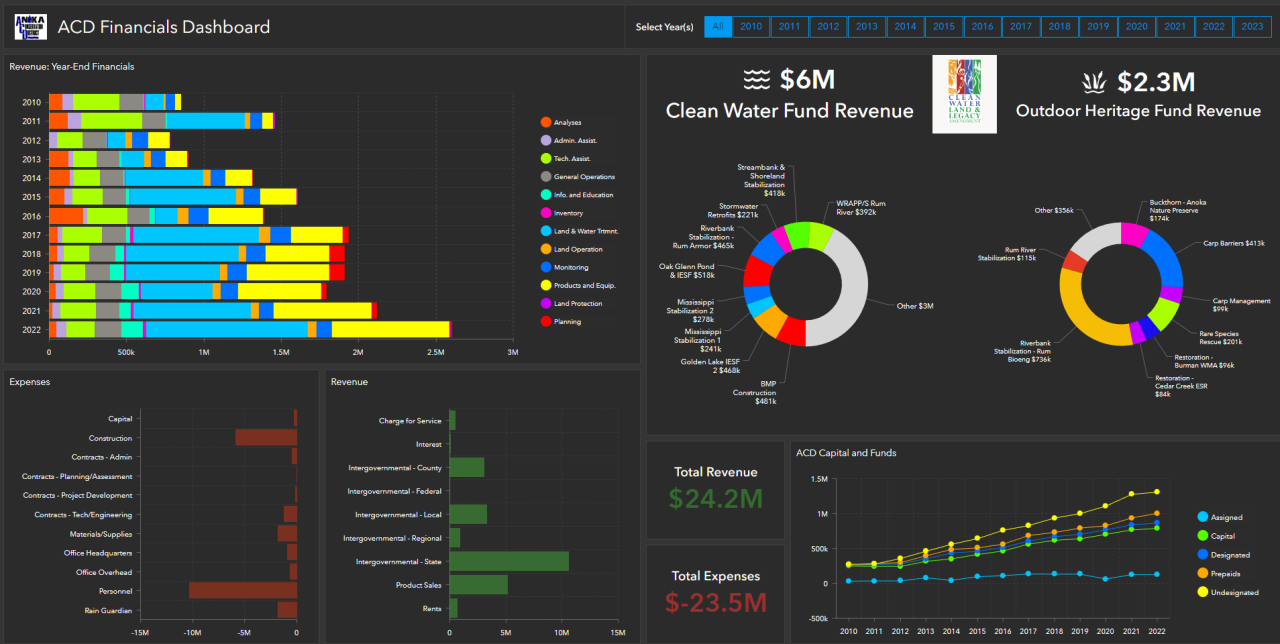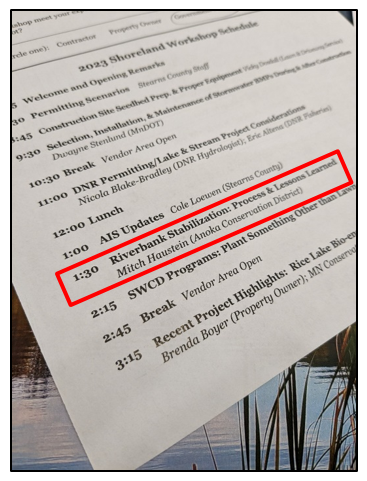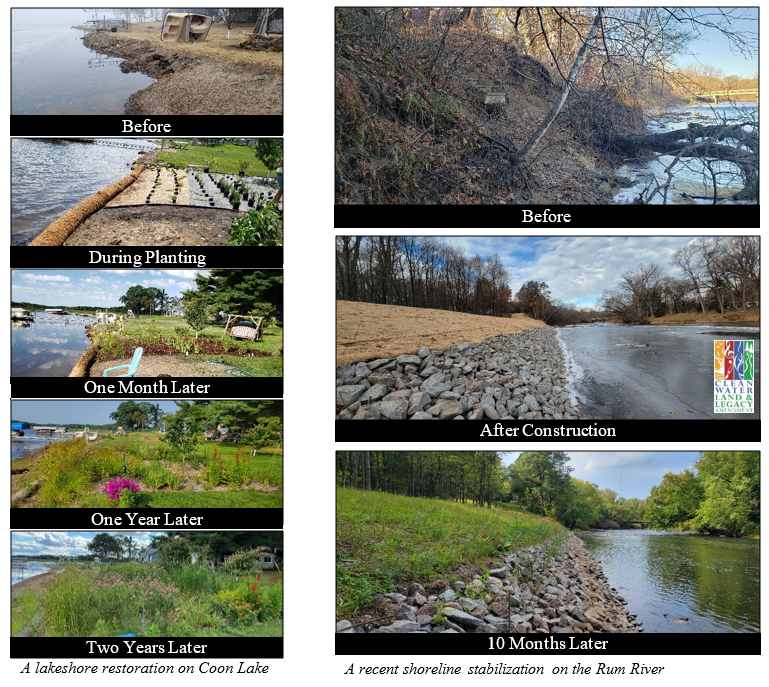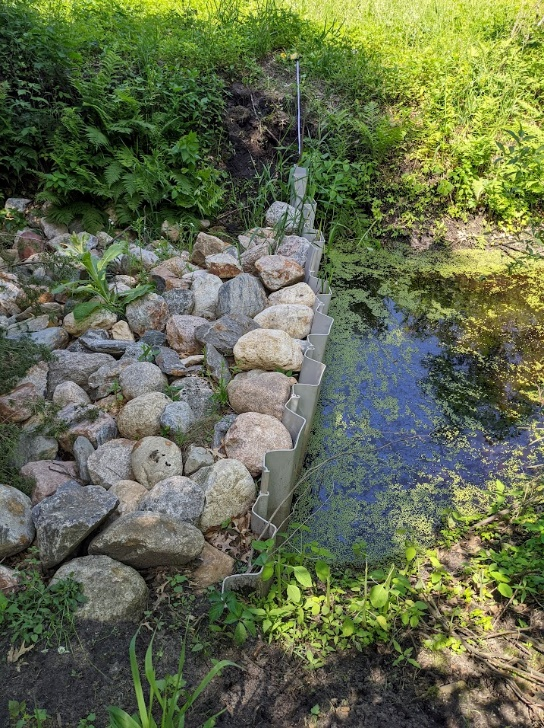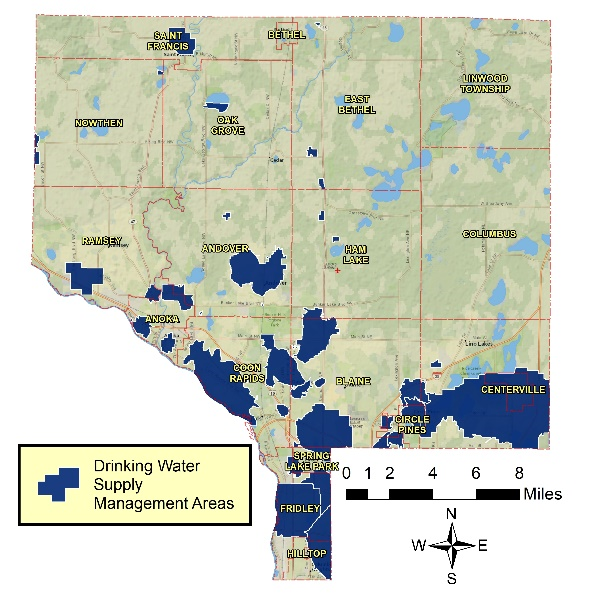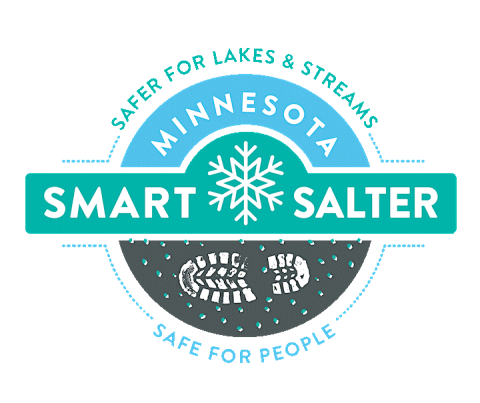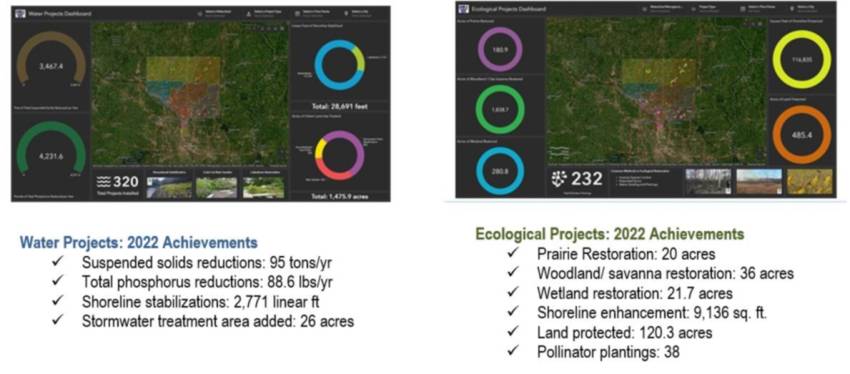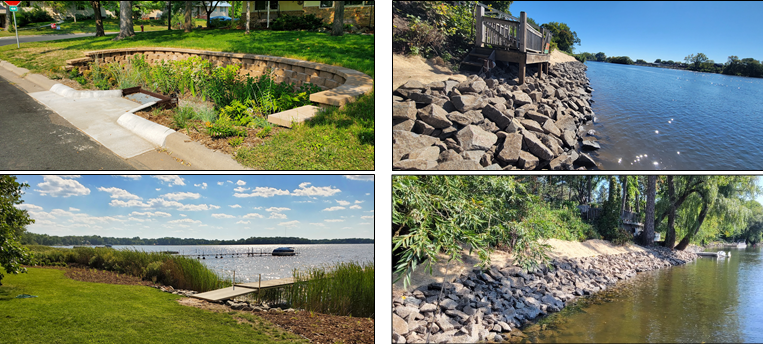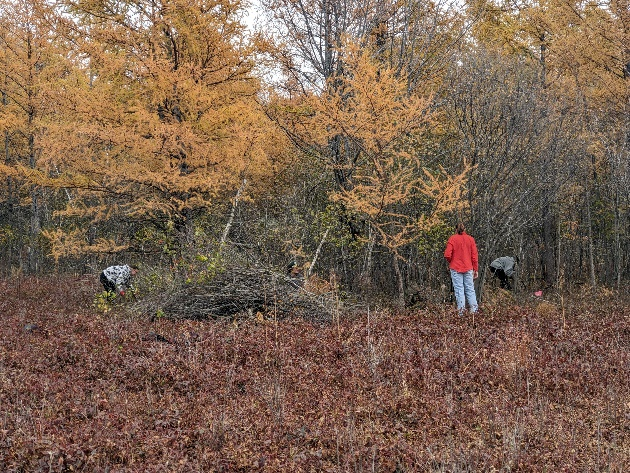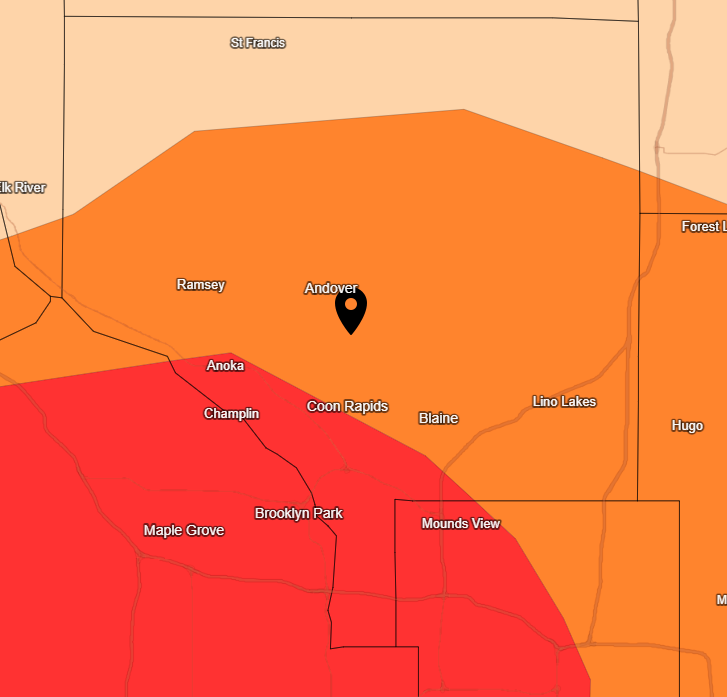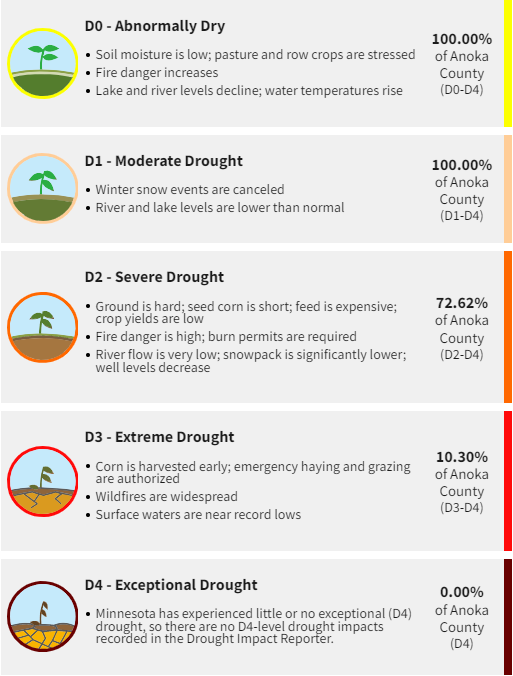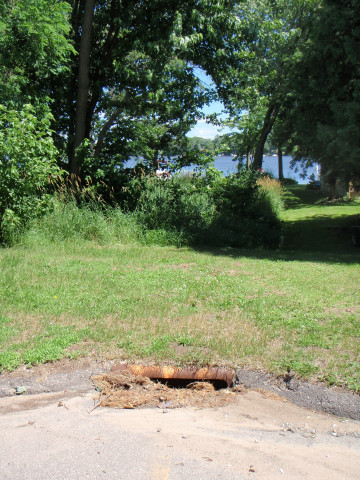Adapted from: Matthew Russell is a Minnesota Extension specialist in forest resources.
Emerald ash borer (EAB) has left a wake of dead ash trees throughout 4.3 million acres across the state. Minnesota forests are home to three native ash species. Unfortunately, all of these ash trees are susceptible to EAB. Here are seven native tree species that you can research for replacing your ash. Each species has its own unique characteristics and are adapted to different environmental conditions.
American Elm (disease-resistant elm varieties) Like ash, elms can tolerate wet conditions. Elms are slightly different in that they require full sun for the best growth.
Quaking Aspen Aspen sprouts vigorously, a form of reproduction without using seeds. It is often one of the first species to come back to an area after a timber harvest or fire.
Northern White Cedar In its natural habitat, it can form dense stands and survives well in moist soils. Northern white cedar trees will attract wildlife. Cedar trees are a favorite of white-tailed deer.
Swamp Oak This species can tolerate heavy and wet soil, which makes it a good replacement for black ash. While native only to southeastern Minnesota, swamp white oak is known as a climate change "winner" and has been planted with success in research trials in northern Minnesota.
Hackberry It can survive heat and drought or wind and ice, making it suitable for Minnesota's climate. In its native habitat it can be found in floodplains and along rivers in the central and southern portions of the state.
Silver and Red Maple are common in southern Minnesota and grow into the north-central part of the state, typically along rivers. These maples are widely planted as a shade or ornamental trees. Silver maples leaves are are green on top and "silvery" on bottom and red maple leaves turn a brilliant red in the fall, giving the trees their names.
River Birch can thrive in floodplains and near stream banks. River birch can be a single or multi-stemmed tree, making it a great tree to consider for the landscape around your home. Its copper-colored bark makes it stand out from other common trees.
Diversifying the types of species you plant in your yard or woodland gives you reassurance that your landscape can survive future insect and disease outbreaks. For more options, Extension's replacement trees for ash page can help you figure out which trees will grow well in your plant community. Consult an arborist or forester for more advice to make sure you plant the right trees in the right spot.
For more information contact Becky Wozney, Wetland Specialist, at
ACD was recently awarded National Fish and Wildlife Foundation Monarch Butterfly and Pollinators Conservation Funds to increase habitat for the monarch butterfly and other pollinators. ACD is collaborating with Sherburne County Parks and Great River Greening to restore and enhance habitat and create pollinator corridors within the Anoka Sand Plain region. This funding will help support and expand state programs such as the Anoka Sand Plain Partnership and the BWSR Habitat Enhancement Landscape Program.
Sherburne County Parks will coordinate restoration and enhancement activities at Bdé Heḣáka, Omashkooz Zaaga'igaans Regional Park, a new park in coordination with Tribal Historic Preservation Officers from the Upper and Lower Sioux Community and Mille Lacs Band of Ojibwe to restore land through traditional cultural methods. Great River Greening will coordinate projects to enhance large habitat corridors in Sterns, Sherburne, Chisago, Wright, Anoka, Benton and Morrison counties. ACD will coordinate projects within Anoka County.
Unused lots, agriculture fields that are out of production and turf will be restored to create new habitat by planting native milkweed and wildflowers. Degraded lands that have little to no milkweed and forbs will be enhanced by controlling invasive species and conducting prescribed burns. ACD will be hosting events to plant, collect seed, and participate in a national Integrated Monarch Monitoring Program. Details on volunteer opportunities are coming soon! For more information contact Carrie Taylor, Restoration Ecologist, at
Spring is upon us! Some of the first plants to emerge are woodland wildflowers known as spring ephemerals. These short lived gems take advantage of the spring sunlight by completing their life cycles before the forest canopy leafs out for the season. In addition to their beauty, spring ephemerals provide critical resources for pollinators as they emerge in the early spring. Common ephemerals include Hepatica, Trout Lily, Bloodroot, and Trilliums.
Among the first plants to green up in spring, garlic mustard outcompetes native spring ephemeral wildflowers, diminishing early season resources for pollinators and degrading forest health. Garlic mustard has a two year (or biennial) life cycle, producing a short basal rosette without flowers in the first year and a tall "bolting" stalk in the second year. It's important to pull these weeds before they produce seed in the second year. Treat garlic mustard by pulling the whole plant and the roots by hand. If you pull garlic mustard before it flowers, leave the material on the ground to decompose. If you pull it after flowering or seed production, bag it and dispose of it properly so that no seeds are spread.
Learn tricks to help identify and treat garlic mustard from the MN Dept of Ag and Friends of the Mississippi River. Help us protect the beautiful and diverse forests of Anoka County by pulling garlic mustard! For more information contact Logan Olson, Restoration Technician, at
Dreaming of warmer weather and gardening season? Applications are now open for Fall 2024 individual Lawns to Legumes grants! Minnesota residents are eligible to apply for $400 reimbursement grants for creating native pollinator habitat on their properties. Projects can take the form of small pocket plantings, larger pollinator meadows, or pollinator friendly lawns. Grant recipients are selected by a lottery system. The application closes on May 15th. Check out the MN Lawns to Legumes page for a plethora of resources on pollinator garden design, selecting native plant species, and maintaining pollinator habitat.
Note: Individual Lawns to Legumes grants are distributed at the state level, not by ACD. You can find contact information for assistance with these programs at the links above. For more information contact Logan Olson, Restoration Technician, at
ACD staff recently reflected on 2023 to take stock in how well we've been doing to implement our 10-year Natural Resources Stewardship Plan. We looked at 24 Keystone Endeavors across four priority natural resources, our human resource (community), and internal operations. We also considered foundational knowledge gained through monitoring, inventory, analysis and planning. Grades reflect the following:
A - Ahead of plan
B - On track
C - Progressing slower than anticipated
D - No progress
F - Neglected
10-year Goals
A prerequisite to gauge success is to define our 10-year expectations and aspirations for each keystone endeavor based on our current and anticipated staff and financial capacity. Some goals are easily quantified while others are more subjective.
For more information contact Chris Lord, District Manager, at
Emergent aquatic plants such as cattails, bulrushes, and sedges grow within the shallow margins, or "littoral zone", of most lakes in Minnesota. These plants improve water clarity as their roots stabilize the lakebed and take in nutrients. Their stems and leaves provide habitat both above and below the water, and they protect shorelines against the forces of wave action. Emergent plants often grow alongside other aquatic vegetation, collectively creating diverse habitat essential to lake health.
Any Destruction of Emergent Vegetation Requires a Permit in Minnesota - Lakeshore owners often wish to remove emergent vegetation to improve their water access. Given the important role emergent vegetation plays in lakes, any removal of aquatic emergent plants requires a permit from the Department of Natural Resources. The permit process connects landowners with professionals to ensure that the extent of vegetation removal (and methods used to achieve it) minimize impacts to the lake. Learn more about aquatic plant regulations HERE.
When Does Emergent Vegetation Become Problematic? - Non-native species such as narrow-leaf and hybrid cattails often grow in dense monocultures that can outcompete native species. Habitat quality and recreation can be quickly reduced as these species spread across large areas of shallow water, but management efforts to remove them are often challenging and costly. When occurring in small clusters, these plants can still provide water quality benefits along shorelines where native emergent plants are absent. In either circumstance, any removal of emergent plants - even if non-native - requires a permit.
Expectations for Living on a Lake - Aquatic vegetation is a natural and important part of lake and wetland systems. The abundance and types of plants present are largely driven by water depth and clarity. Many lakes in the north metro are shallow (less than 15 ft. deep) or are technically open-water wetlands. When paired with good water quality allowing sunlight to reach the bottom, these lakes usually contain abundant vegetation throughout. The alternative is poor water quality from disturbances such as excessive nutrients, which can reduce aquatic vegetation and the fish and wildlife that depend on it. Learn more about shallow lake vegetation from this StoryMap produced by the Rice Creek Watershed District: Aquatic Plants: Guardians of our Shallow Lakes.
For more information contact Breanna Keith, Water Resource Specialist, at
ACD has collaborated with BWSR's RIM program to establish conservation easements to permanently protect, restore, and manage natural resources on private lands. Land protection has many benefits including protecting water quality, habitat, creating conservation corridors, and supporting climate resiliency.
In 2023, two new conservation easements were established along the Rum River. They are adjacent to a conservation easement that was established in 2022 through the Rum RIM program and across the river from a DNR Conservation Easement. These conservation easements create a block of protected land totalling 183.5 acres along 10,960 feet of shoreline. The Gamm, Stenson-Gamm, St. Francis Land Development, and MN DNR Conservation Easement create an additional habitat core with functioning ecosystems and enhance habitat in the Rum River corridor.
For more information contact Carrie Taylor, Restoration Ecologist, at
ACD staff provide technical assistance for a wide-variety of projects each year. Many of the requests for assistance come directly from landowners interested in improving natural resources on their individual properties. Technical assistance is also provided for projects in collaboration with county, city, and watershed entity partners. The table below summarizes 2023 technical assistance provided by ACD staff.
Assistance usually begins with a site consultation. Consultations typically include a conversation with the landowner, desktop review of the site using GIS mapping software and available data sets, and a site visit to discuss options. If the landowner is interested in pursuing a project, ACD can provide design and installation oversight services. Maintenance guidance is also provided for previously installed projects.
For more information contact Mitch Haustein, Stormwater & Shoreline Specialist, at
Emerald Ash Borer (EAB) is an invasive insect that has killed millions of Ash trees throughout North America. Since 2009, EAB has been detected in 46 counties in Minnesota, including Anoka County. MN is home to over 1 billion Ash trees, all of which are vulnerable to EAB infection.
Trees affected by EAB dry out and rot quickly, creating public safety hazards. If allowed to decay, these conditions can cause trees to become dangerous to manage. Removing ash trees in high-traffic areas including along public trails and neighborhood streets is a top safety priority. Learn more about Emerald Ash Borer on the ACD Website.
Oak Wilt is a fungal disease that affects all species of oak trees. It is spread by sap beetles and through the tree's root systems. The disease affects Oak species differently; it can kill Red Oak trees in 2-3 months whereas White Oaks can live up to 20 years after becoming infested. It's important to know the signs of Oak Wilt to prevent further forest damage. Learn more about Oak Wilt on the ACD Website.
Help Stop the Spread!
Avoid cutting and pruning Ash trees from May 1 - September 31 as EAB insects are most active during this time. Do not transport firewood offsite from where it was collected. The Twin Cities metro and much of Eastern, MN is within an EAB quarantine zone and transporting firewood out of these areas risks spreading EAB.
Avoid cutting and pruning Oak trees from April 1 through July 31 as sap beetles are most active during this time. Treat spring and summer tree wounds with a water based paint or pruning wound sealer to avoid attracting sap beetles. Do not transport firewood off the site where it was collected. The Twin Cities metro and much of east central Minnesota is infested with Oak Wilt. Transporting firewood out of this area risks spreading this forest disease.
The unseasonably warm winter extends the 'don't prune' window and it probably starts in March for 2024.
ACD was a recipient of the MN Department of Natural Resources ReLeaf Community Forestry Grant to help efforts to manage Oak Wilt and EAB in Anoka County. A variety of tree species will replace those affected by Oak Wilt in the Anoka Nature Preserve (ANP), including treating Common buckthorn in 2024-25 to free up space for new trees to be planted in 2026. Ash trees at Kings Island in the City of Anoka will be removed in early 2024 and new trees will be planted in 2025. Planting at both of these sites will be completed with the help of volunteers. If you have interest in helping out as a volunteer, sign up here!
For more information contact Logan Olson, Restoration Technician, at
The proposed removal of Golden Lake from Minnesota's impaired waters list was highlighted in a recent Board of Water and Soil Resources (BWSR) article that underscores the importance of Clean Water Funds (CWF) for measurable water quality improvement. ACD secured two CWF grants for iron-enhanced sand filters (IESF) to reduce phosphorus reaching Golden Lake, located in Circle Pines, MN. Iron-filings mixed throughout the sand, capture phosphorus from stormwater passing through the filters. One IESF was installed in Centennial Green Park (2015) in the City of Blaine, and the other was installed in the City of Circle Pines (2019). Both projects were identified as cost-effective phosphorus reduction options in a Golden Lake stormwater retrofit analysis completed by ACD.
The proposed delisting of Golden Lake is a testament to the hard work and collaboration by many, including ACD, the City of Blaine, the City of Circle Pines, and the Rice Creek Watershed District. Mitch Haustein, ACD's Stormwater and Shoreland Specialist, assisted with the projects and was interviewed for the article. Click here to read the full article from BWSR that also includes brief stories about proposed delistings for 6 other Twin Cities area lakes, 1 Wright County river reach, and 1 Winona County stream segment.
For more information contact Mitch Haustein, Stormwater & Shoreline Specialist, at
Minnesota's natural resources play an important role in the state's economy and high quality of life. Protecting and managing these precious natural resources is a large undertaking and takes continuous effort at the state and local level. Soil & Water Conservation Districts (SWCD's) throughout the state are governed by a five member board of supervisors elected by the citizens of the county. The SWCD board is responsible for policy development, annual plans, budgets, and more. The Anoka Conservation District will have three supervisor positions on the November 2024 ballot. These positions are four-year terms and require between 1 to 3 monthly meetings and receive modest compensation per meeting.
The following districts in Anoka County will be up for election:
District 1 - Anoka, part of Coon Rapids, Nowthen, Oak Grove, Ramsey, St. Francis
District 4 - Portions of Blaine and Coon Rapids, all of Lexington
District 5 - Bethel, Centerville, Circle Pines, Columbus, East Bethel, Ham Lake, Lino Lakes, Linwood Township
Filing is easy but must happen between May 21 and June 4. Just go down to the County Government Center in Anoka during that time and they'll tell you what to do.
For more information read the frequently asked Questions or contact Kathy Berkness, Office Administrator, at
With the warmer winter so far in 2023/2024, this is a good time to revisit Minnesota data on historical duration of ice cover. MPCA has interactive graphs showing lake ice durations over many years on their Climate Change and Minnesota's Surface Waters page. Choose the "Lake ice durations" tab at the top. The graph below shows the overall trend of lake ice duration (in days) from 1967 to 2023, with the colors representing Minnesota lakes in the north, central and south portions of the state.
You can choose to evaluate trends in the each of the three regions of the state, or for many individual lakes, over a period of record of your choice. See more details on the following tabs of Minnesota Pollution Control Agency's Climate Change and Minnesota's Surface Waters page: Lake ice durations, Lake temperature, River flows & floods, Biological communities and FAQ.
Dreaming of warmer weather and gardening season? Applications are now open for Fall 2024 individual Lawns to Legumes grants! Minnesota residents are eligible to apply for $400 reimbursement grants for creating native pollinator habitat on their properties. Projects can take the form of small pocket plantings, larger pollinator meadows, or pollinator friendly lawns.
Grant recipients are selected by a lottery system. The application closes on May 15th. Check out the MN Lawns to Legumes page for a plethora of resources on pollinator garden design, selecting native plant species, and maintaining pollinator habitat.
Note: Individual Lawns to Legumes grants are distributed at the state level, not by ACD. You can find contact information for assistance with these programs at the links above.
This past month, ACD and partner staff completed an 8 hour chainsaw safety training course. The skills and safety tips learned will be applied while clearing large buckthorn, cutting cedar trees for streambank stabilization projects, and while addressing other natural resource concerns that come our way. Winter is an ideal time to cut or trim oak and ash trees without the high risk of spreading oak wilt and emerald ash borer diseases. If you plan to cut trees on your property this season, remember the following tree felling rules:
Hazards- Survey the area to identify and remove any potential hazards.
Hinge- Create a hinge for safe and predictable felling. See an example notch here.
Escape- Have 2 escape routes at 45 degrees from your cutting direction.
Lean- Analyze the tree from all angles to ensure you understand its weight distribution and lean direction.
Plan- Have a plan to complete a safe and predictable cut. Click here to learn how to execute the bore cut.
Having the right training and equipment can spare you from serious harm when using a chainsaw. Take the time to educate yourself on proper safety equipment and risk management strategies. Safe cutting! You can read a description of the training course here or contact Logan Olson, Restoration Technician, at
A hallmark of ACD's natural resource work has included the stabilization of eroding riverbanks and the enhancement of native vegetation in adjacent riparian and floodplain areas. These activities improve water quality in the river and habitat quality along it. Included in the goals of our Phase 2 grant for Rum River habitat enhancement through the Outdoor Heritage Fund of the Clean Water Land and Legacy Amendment is the improvement of in-stream habitat in the Rum River channel. This is a new endeavor for ACD that presents an exciting opportunity to expand our work and our partnerships within the Rum River Corridor.
Though we are over a century removed from the widening and scouring of the Rum River by the millions of logs cut during the Minnesota timber boom, the effects of that industry still remain. Rivers used as log arteries were made wider and more consistent to ensure the smooth sailing of logs downstream. In more modern times, towns piped rain water directly to the river from impervious areas via stormwater conveyance systems. These rapid spikes in water input during storms exacerbate bank erosion, down-cutting, and sedimentation in the river at rates far beyond what was natural.
Due to this historical usage of the Rum River as a conveyance tool for wood and stormwater, habitat for fish, invertebrates, mussels, and other aquatic life remains lacking and out of balance. In the coming years we will be partnering with Anoka County Parks, DNR Fisheries, The Nature Conservancy and others to identify and enhance missing or deficient in-stream habitat. Secondarily, we will look for enhancement opportunities for game fish habitat near publicly accessible shorelines to improve access to quality shore fishing. For more information contact Jared Wagner, Water Resource Specialist, at
Wildlife management areas (WMAs) are part of Minnesota's outdoor recreation system and are established to protect those lands and waters that have a high potential for wildlife habitat and other compatible recreational uses. WMAs are key to:
- protecting wildlife habitat for future generations,
- providing citizens with opportunities for hunting, fishing and wildlife watching, and
- promoting important wildlife-based tourism in the state.
How did WMAs get started?
Minnesota's WMA system started in 1951, when the State established its "Save the Wetlands" program to buy wetlands and other habitats from willing sellers to address the alarming loss of wildlife habitat in the state. Initiated by a handful of visionary wildlife managers, the WMA program evolved into the present-day system of WMAs.
How many WMAs are there and where are they located?
There are over 1.3 million acres of high quality habitat in about 1,500 WMAs located throughout the state, making it one of the best and largest WMA systems in the country.
How are WMAs managed?
WMAs are the backbone of DNR's wildlife management efforts in Minnesota. Much of the wildlife managers' work is directed toward protecting and enhancing wildlife habitat on WMA lands. For instance, prairie and grasslands are planted, wetlands are restored and enhanced. Prescribed burning is done to maintain grasslands, prairies, and brush lands. Forest openings and regeneration projects benefit create wildlife habitat. Different management practices are utilized for different ecotypes.
What can I do to help?
There are opportunities to volunteer at WMAs by picking up trash to assisting with seed collection and much more! For more information and locations of WMAs go to this link https://www.dnr.state.mn.us/wmas/index.html.
For more information contact Becky Wozny, Wetland Specialist, at
The elected Board of ACD is moving forward with legislation to have the ability to levy property taxes for residents of Anoka County. With the levy limits included in the bill (HF3701) and ACD's other revenue streams, the anticipated levy increase for the average single family home in 2025 through 2029 is around $0.67 per year. Why bother pursuing legislation for such a small levy? That's a long story, but here's the gist of it.
- ACD has been around since 1946 serving the public by providing financial and technical assistance to private landowners who want to be good stewards of our lakes, stream, wetlands, drinking water, wildlife, etc.
- ACD submits a budget to Anoka County to request funding to support our mission. The County has the option to fund all, some or none of the request.
- ACD's requests to the County compete for limited funding against transportation, public safety, social services, economic development, and parks and recreation.
- For 20 years, when population growth and inflation alone grew Anoka County's budget by 83%, ACD's allocation grew by 8.4%.
"So what you're saying is that if ACD gets its way, a family of four in Anoka County will have to give up one fancy cup of coffee every four years for cleaner lakes and rivers, better fishing, improved habitat for wildlife, and safer drinking water?" Well, when you put it that way…
For more information about ACD's pursuit for levy authority contact Chris Lord, District Manager, at
Each season, local high school students venture to a nearby river or stream, grab a dip net and pair of waders, and search for invertebrates (a mix of aquatic insects, crustaceans, bugs, snails, worms, and other critters lacking a backbone) living amongst the submerged rocks and vegetation. They bring their catch back to their partners on shore, who use guides to identify the invertebrates or preserve them for identification at a later date in the lab. In 2023, ACD staff led 560 high school students across 20 classes and 5 schools in these "biomonitoring" efforts. Besides being a great way to get some fresh air, students learned valuable lessons in aquatic ecology.
Individual aquatic invertebrates have different sensitivities to environmental disturbances such as contamination and habitat loss. Some, such as stonefly and mayfly nymphs, often have a strong negative reaction to disturbance, while others, such as leeches, midges, and aquatic worms, are usually more tolerant and able to persist through a variety of conditions. Understanding these tolerance thresholds across species is an efficient way to broadly assess the health of a waterbody. For example, a high quantity and/ or diversity of species including those considered "intolerant" (sensitive) is a likely indicator of healthy habitat and water quality, whereas the presence of only more "tolerant" species hints at poorer water quality and habitat. Biomonitoring data is often paired with other information, such as water quality or stream morphology data, to identify where aquatic impairments are present and management efforts should be pursued.
After the students have finished collecting and processing samples, ACD staff re-identifies them and summarizes the data in the annual Water Almanac. Through this, big-picture trends in invertebrate communities (and stream health, by extension) can be explored across time. For more information contact Breanna Keith, Water Resource Technician, at
The Anoka Sand Plain (ASP) Rare Plant Rescue Program had a busy year in 2023! Thanks to the assistance of partners and volunteers, we:
- Rescued over 900 state threatened and endangered plants from 3 new sites!
- Transplanted over 600 rescued plants and species from seed germination trials.
- Collected seed from 5 rare plant ASP populations for genetic preservation in the MN Landscape Arboretum's Rare Plant Seed Bank.
- Began stem cutting and/or germination experimentations on Gaylussacia baccata (Black Huckleberry) and Rubus sp. (Bristle-berries).
- Collaborated with the City of Blaine to adjust land management practices around a rare population of Endangered Aristida longespica (Slimspike Three-awn).
- Implemented follow-up monitoring of previous rescue transplants to calculate survival and record success rates of locations and methods.
Looking Forward:
- Plants rescued in 2023 are overwintering at the MN Landscape Arboretum and will be ready to move into their new homes in 2024.
- As habitat loss continues, we will continue to seek out and survey new suitable habitats for the rescued transplants.
- Research efforts will continue as we expand our knowledge about these rare species.
- Conservation plans are being developed for the rare species of the ASP, outlining methods and protocols for plant rescue and conservation.
Recently, I have seen some pushback from folks who say that asking the general public to recycle, conserve water, reduce their carbon footprint, etc. is inconsequential compared to commercial impacts and thus misguided. The consensus that corporations and governments have an outsized influence on these environmental impacts and private citizens contributions to the problem don't matter. Here are two articles in the Scientific American or The Atlantic, that discuss this issue in more detail.
Though I don't disagree that commercial/agricultural uses oftentimes outweigh residential uses (e.g. pesticide and fertilizer application); I also believe that if enough people adopt enough measures we can make a difference in a twofold manner. One, we will be more aware of how corporations operate and through purchasing power and/or legislation create changes that benefit the resource. Check out this awesome resource developed by USGS and learn more about water use in your local area.
In another case, because of both residential and commercial changes in habits; we have actually reduced water usage dramatically in the last 3 decades. We should celebrate this because clean water is not infinite. There are still issues surrounding water quantity (and quality) and we can never sit on our laurels but we can make a difference one drippy faucet at a time. For more information contact Becky Wozney, Wetland Specialist, at
Twenty-years ago we designed conservation projects with a tape measure and graph paper. Over the years, ACD has gone high tech. Today we use a survey-grade GPS (shared with neighboring SWCDs) and landscape design software. This allows precise measurements and estimates of quantities. It also allows us to clearly communicate a project's outcomes to landowners and contractors. But we still pull out the tape measure once in a while – it never crashes or fails to connect.
We're the private lands conservation experts! We provide financial resources and expertise to help private landowners with conservation efforts on their property that also have public benefits. Minnesota is a unique state, with an SWCD in nearly every county to assist with work on the ~70% of Minnesota's lands that are private. ACD is simply an SWCD that shortened its name. In comparison, the well-known MN Department of Natural Resources (DNR) manages public lands and resources.
For more information about SWCD's and the role they play within the state, contact
Jamie Schurbon, Watershed Program Manager,
Unused wells can serve as direct conduits for surface contaminants to reach our aquifers. ACD was awarded a grant in 2020 through the Clean Water Fund to help eligible landowners seal unused wells located within Anoka County. This program has been extended to run through 2024 in order to continue to to provide local residents assistance with sealing an unused well on their property!
A well is defined as "not in use," when the well is not functional, cannot readily pump water, or has not been operated on a regular basis. A "not in use" well has not been sealed by a licensed well contractor. A well that is "not in use" (i.e., "abandoned") must be repaired and put back into use, permanently sealed by a licensed well contractor, or the owner must obtain a maintenance permit. In many cases, placing an old well back into use is not practical. Sealing your well is also legally required when you go to sell your home. If your house was built before public water was available, the property may have one or more wells. Wells can be located either inside or outside a residence.
Indoors look for:
- Glass block or concrete patch in an exterior step.
- Wells are often housed in a small room in the basement, many times under exterior concrete steps.
- Pipe sticking up out of the floor in your basement, or a concrete patch in the floor where the well was located.
- Low spot or sunken area in the ground.
- Metal, wood, or concrete cover or manhole.
- Areas that stay wet can be caused by an unsealed flowing well.
- An old shed or well house, or an old pump.
- Dug wells typically appear as a ring anywhere from 1 foot or several feet in diameter, made of concrete, tile, bricks, or rocks.
- Pipes above, at, or below the surface may indicate a well.
"What good is the warmth of summer, without the cold of winter to give it sweetness?" wrote John Steinbeck. We know that Minnesota winters ban be frigid, making people more likely to stay indoors. Many residents are unaware of all the great activities are out there to keep you from becoming stagnant in the winter months and able to stay healthy and happy. Sometimes winter activities are even more exciting and offer experiences that you don't get during other seasons. Cold-weather camping is a great way to savor those special moments but many folks, even experienced campers, think the idea sounds crazy. Click here to learn more about the basics of winter camping from the Sierra Club.
To help Minnesotans plan winter visits to state parks, and other recreational areas, the Minnesota DNR shares its top tips to have fun this winter, along with other resources for planning a winter adventure. "We know Minnesotans love being outdoors, and winter offers a whole new way to play outside," said Ann Pierce, the DNR's Parks and Trails Division director. "However, we also know cost and information can be barriers for Minnesotans to get outdoors and enjoy nature. We're working to alleviate this for folks by providing no cost or low-cost activities and providing easy trip planning resources."
Believe it or not, winter is a busy time of year for ACD's field crew. This winter, our buckthorn crew has started a five-year restoration project at Lamprey Pass Wildlife Management Area (WMA) in Columbus, MN. A popular destination for waterfowl hunting, Lamprey Pass is the second largest WMA in the North Metro.
The Lamprey Pass site is currently overrun with common buckthorn, a large invasive shrub that crowds woodland understories and shades out native plants. ACD's crew is working hard to remove this invasive plant from the WMA, creating a more open habitat which will benefit native plant species and make the woodlands more hospitable for hunters. The images above and below demonstrate the impact of clearing buckthorn on the site. For more information about treating buckthorn, contact Logan Olson, Restoration Technician at Logan.Olson @AnokaSWCD.org
Stormwater runoff from human-modified landscapes is a source of excess water and pollutants that can significantly impact rivers, lakes, and wetlands on the receiving end. However, not all drainage areas are created equally; rural landscapes with abundant agriculture and artificial drainage features, or urban areas with infrastructure predating stormwater treatment regulations, are often the most impactful. Areas draining to a priority waterbody are targeted for Subwatershed and Stormwater Retrofit Analyses (SRAs and SWAs). In these analyses, we study how runoff is moving through the landscape, strategically place various Best Management Practices (BMP's), and estimate their anticipated water quality benefits and installation costs. These findings are then summarized into a report which can be referenced by ACD staff and local natural resource managers to pursue the most cost effective projects.
ACD has completed several SRA/ SWA reports, but current efforts are focused on areas draining to the Rum and Mississippi rivers. Projects sited in these areas include rain gardens, subsurface treatment structures, enhanced street sweeping, wetland restorations, soil health practices (cover crops, no- till farming, etc.), and targeted agricultural practices (grassed waterways, riparian buffer enhancements, control basins, etc.). Altogether, approximately 150 urban BMPs and over 300 rural BMPs have been sited, and their associated SRA/ SWA reports will be released in the coming months.
For more information contact Breanna Keith, Water Resources Technician, at
I've been dabbling with how to leverage artificial intelligence (AI) to improve productivity at ACD. Using ChatGPT, I've found a tool that can help generate an outline to serve as a jumping off point when starting a report or project plan. Recently, groundwater contamination problems have been popping up in the news. Within two Andover neighborhoods, residents with contaminated private wells are reduced to only using bottled water until they can hook up to city water. The plume of contamination below their homes, now plaguing them, will certainly continue its journey, ominously passing under neighborhoods in its path. Those hooked up to city water supplies will be fine. Those on wells, may be in for an unsettling surprise.
Where does AI come in? I asked ChatGPT to write a short somber poem about groundwater pollution. Here you go…
Beneath the soil, where secrets flow,
Groundwater whispers, tainted below.
Pollution seeps, a silent intrusion,
Nature's tears in liquid confusion.
Once pure, now stained with human's trace,
A solemn grave for life's embrace.
Quietly it suffers, unseen and still,
Groundwater mourns, a poisoned rill.
Contact Chris Lord, District Manager, at
The Apex Pond enhancement project in the City of Fridley is complete! Project planning began in 2022 with surveying, testing soils for on site contaminants, and design development. Construction began in fall, 2023 and spreading native seed and securing erosion control blanket over the upper slopes surrounding the pond were the final elements needed to complete installation. Originally constructed in 1999 with a ponding depth of one foot for rate control of runoff, the enhanced pond is approximately six feet deep and provides water quality treatment for nearly 90 acres of residential neighborhoods. The increased ponding depth enables sediment and nutrients to settle and accumulate in the pond basin.
For more information contact Mitch Haustein, Stormwater and Shoreland Specialist,
In Anoka County, the Rum and Mississippi Rivers are designated State Water Trails. Like many state trails, information is available about trail access, places to camp, culturally significant areas, and more on the MNDNR's water trails website. ACD is completing a number of projects along both rivers to improve water quality and habitat. We've been especially busy with projects along the Rum River that include wetland restorations, riverbank stabilizations, invasive species management, and habitat protection. Many of these projects are funded in part by the Clean Water, Land and Legacy Amendment.
Prairie once covered 1/3 of Minnesota. Today only a little more than 1% of native prairie remains. Prairie is a key habitat for 34 Species in Greatest Conservation Need (SGCN) and for many at-risk pollinators in Minnesota. It is important to maintain and enhance the little prairie that is remaining to help out these important species. Anoka County Parks maintains prairie habitat on County land with prescribed burns every 3 to 5 years. ACD helped manage weeds before the scheduled burns and overseeded a custom seed mix for each site after the burns. The native seed mixes contain species that are minimally present or not present at all the prairie units. Species that benefit at-risk pollinators were included in the mixes. The goal is to enhance the prairies by reducing non-native weeds and increasing native biodiversity.
Bunker Hills Regional Park Pasture Unit includes a wetland depression surrounded by dry prairie. Site preparation involved controlling non-native woody encroachment and monoculture patches were sprayed or mowed. ACD overseeded following a prescribed burn in the fall. The seed mix contained 41 different forb species and 5 different grass species. A mix of wildflowers provided pollen and nectar sources for several endangered species of Bumble Bees. For more information contact Carrie Taylor, Restoration Ecologist,
Inventorying shoreline zones on surface waters throughout Anoka County serve as valuable tools for assessing lakeshore and riverbank conditions, comparing current conditions to previous years to identify changes, and for prioritizing project implementation. ACD recently purchased a 360° video camera that has 4 high-definition lenses and a rugged design, to be used outside in the elements. The camera takes continuous video that is Geo-located and stitched together creating a final GPS video that is viewable from all angles. Following a day on the water with the 360° camera, videos are uploaded to Google Street View Studio, a new application recently released by Google.
Once uploaded to the Google Studio App, the videos are public and accessible to anyone. ACD utilizes these videos to compile shoreline reports, which describe erosion severity and provide recommendations for project needs. Shoreline videos along Martin, Coon, Linwood Lake, the southern portion of the Mississippi River, and Oak Glen Creek were collected throughout 2023 and are now available to view. Click on the individual links above to begin exploring. Videos along the Rum River were also collected and will be available to the public soon!
For more information contact Kris Larson, Water Resource Specialist, at
ACD has a new Board Member for District IV. Kate Luthner was officially sworn in on November 20, at the ACD office. Kate is a 20-year resident of Minnesota and lives with her husband and three kids in Columbus. She enjoys hiking, biking, gardening, and reading and painting for those cold winter months. Kate previously served on the Forest Lake Area School Board and volunteers with several other local organizations. Kate has a BA from Cabrini University and an MBA from the University of St Thomas. She is excited to learn more about the role of SWCD's and how ACD is working to preserve and enhance the world we all share.
During a recent site visit to explore wetland restoration opportunities, ACD staff came across a fantastic example of beavers' "engineering" skills in action! A series of three beaver dams, located near the outfall of a Rum River tributary, were effectively slowing and spreading the stream's flow into the surrounding floodplain wetlands. Healthy connections between streams and their floodplains provide numerous water quality and habitat benefits, and in this case those benefits also extend to the Rum River immediately downstream.
Many streams in modified landscapes take on excess water from artificial drainage features like ditches and storm pipes. Over time and especially during extreme precipitation events, these higher volumes of water often increase erosion within the stream, which can lead to the straightening and downward-cutting ("downcutting") of the stream channel and, as a result, the disconnection of the stream from its floodplain (see the figures below, produced by American Rivers).
Floodplain reconnection efforts are an increasing priority amongst many conservation organizations, but they can be costly and complicated – particularly if development has occurred within the floodplain. However, in areas where streams have room to spill into their floodplains without causing damage, allowing and even promoting beaver activity can be a cost effective way to help restore riparian corridors. Learn more about the benefits of beavers in the articles below.
- Riding Mountain National Park, Canada
For more information contact Breanna Keith, Water Resources Technician, at
ACD is now taking orders for the 2024 tree sale! The district offers a variety of species including black cherry, mixed oak, maple, lilac and pine trees. Trees can be purchased as bare root seedlings in bundles of ten for $23.00, or twenty-five for $45.00, not including tax. Mixes of native prairie seed are also available. You do not need to be an Anoka County resident to order. Click here to learn more and place your order today! For more information contact Kathy Berkness, Office Administrator,
"When Development Comes to Town" is an animated video directed toward local decision makers that tackles some of the challenges and opportunities presented by growth in our small communities. Developed by the Lower St. Croix Watershed Partnership and East Metro Water Resources Education Program, this fast-paced video runs through a gauntlet of topics in about ten minutes, introducing the viewer to concepts ranging from shoreland ordinances to Minimal Impact Design Standards (MIDS). This video masterfully weaves together complex insights and downhome practicality with just the right amount of visual interest and is a 'must watch' for new, or even experienced, elected officials, staff and planning commission members for local governments. Click the link and enjoy! When Development Comes to Town
Contact Chris Lord, District Manager,
ACD would like to send out a big thanks to our hardworking volunteers for all their great work during the 2023 monitoring season. State-wide data networks are made up of thousands of dedicated volunteers and provide some of the oldest and most reliable data in the state. These historical data sets are crucial for accurate trend analysis and assist in making informed management decisions. The data provided by volunteers helps verify high rainfall totals, provides critical information during flooding events, monitors drought conditions, and provides needed guidance on Minnesota's changing climate. Some of ACD's volunteers have been long time participants and have contributed data for over 15+ years.
The Volunteer Precipitation Monitoring network includes more than 20,000 volunteers nationwide who measure daily rainfall. Explore climate data through the Minnesota State Climatology database https://climateapps.dnr.state.mn.us/index.htm.
The Lake Level Monitoring Program documents seasonal fluctuations of water levels in around 1,050 lakes throughout Minnesota. Explore lake data through the Minnesota 'Lake Finder' database. https://www.dnr.state.mn.us/lakefind/index.html
For more information contact Kris Larson, Water Resource Specialist, at
"Climate is more than just numbers." – Jim Zandlo
Eight Martin Lake residents, in collaboration with ACD, are bundling their individual lakeshore improvement efforts into one larger project. By joining efforts, they are hoping to save money while making the work more attractive to contractors. It seems to be working, as 15 contractors joined in the bidding process!
This upcoming project is being coordinated by ACD, who has completed designs and will be providing construction management. ACD has also been able to incorporate three state grants, making the project even more affordable. In exchange, the landowners are installing lakeshore stewardship practices that go above and beyond – utilizing natural materials, native plant buffers, and aquatic vegetation for habitat. Collectively, we'll make a healthier lake.
For a fun & informative 8-minute video about healthy lakeshores, watch ACD's video "Our Lakeshore Connection." For more information contact Jamie Schurbon, Watershed Project Manager,
Construction of the Apex Pond enhancement project in the City of Fridley is nearly complete (see pictures above). The only remaining elements are to spread native seed and lay erosion control blanket over the upper slopes surrounding the pond. Apex Pond in the City of Fridley was originally constructed in 1999 to help control the rate of stormwater runoff entering Springbrook Creek from nearly 90 acres of residential neighborhoods. ACD, in partnership with the City of Fridley and the Coon Creek Watershed District (CCWD) identified an opportunity to enhance the water quality treatment capacity of Apex Pond by increasing the pond's storage volume.
You can also check for project updates on the City of Fridley's website: https://www.fridleymn.gov/1655/Apex-Pond-Enhancement-Project.
For more information contact Mitch Haustein, Stormwater and Shoreland Specialist, at
Minnesota boasts an impressive 12,208 lakes, as classified by the Minnesota DNR. Among them, 8,402, or roughly 69%, are classified as 'natural environment lakes.' Anoka County is home to several natural environment lakes including Fawn, South Coon, and Island Lakes.
What defines a natural environment lake? These are the smaller, shallower lakes, typically less than 150 acres in size and less than 15 feet deep. They come with numerous developmental constraints and are particularly sensitive to disturbance. With lakeshore properties in high demand across Minnesota, many natural environment lakes are now being earmarked for development. However, it's important to note that the lakeshore experience offered by these lakes might not align with the typical desires for boating or swimming that potential buyers often have.
Learn more about natural lakes on November 8th through a webinar featuring Joe Bischoff, an aquatic ecologist at Barr Engineering Co. Joe will delve into the intricacies and benefits of natural environment lakes. Additionally, some of the ongoing local conservation efforts to monitor and protect natural environment lakes will be highlighted.
Register today at tinyurl.com/small-lakes
ACD was awarded a contract with the Anoka County Parks Department to complete 2,500' of cedar tree revetments along the Rum River in Anoka County between 2023 & 2026. This project is being funded through a Clean Legacy Partners grant that was awarded to Anoka County Parks in 2023. The work will be completed through a partnership between ACD, Anoka County Parks, and the Conservation Corps of MN.
For more information contact Kris Larson, Water Resource Specialist, at
ACD strives to build resilient pollinator corridors throughout Anoka County. This goal is accomplished by protecting and enhancing existing habitat and creating new habitat. ACD is fortunate to have local partners who also share this vision and are helping identify unused turf areas that can be converted to native plantings. ACD is currently working with the Cities of Fridley and Blaine to convert turf into prairie plantings in public green spaces. Half an acre of turf is being converted in Fridley's Commons Park and 0.3 acres of turf to prairie at Blaine's Laddie Lake Park. Staff from both cities prepared the sites and mowed the sites to prevent weeds from seeding. ACD staff seeded the sites in the spring. Members of the Cities and multiple volunteer groups planted native grasses and wildflowers to add to the seed mix.
These projects are funded by BWSR's Habitat Enhancement Landscape Pilot (HELP) grant. Other ACD HELP turf to pollinator projects are at Coon Lake County Park, Bunker Hills Regional Park and Ramsey River's Bend Park. The BWSR HELP grant also provides funds to enhance native prairies at the Cedar Creek Conservation Area, Bunker Hills Regional Park, Rum River Central Regional Park, Rice Creek Chain of Lakes Park Reserve and Mississippi West Regional Park.
One way to help these projects is to donate your native prairie seeds, including milkweed seed. See ACD's previous post about milkweed seed collection. Watch this short video to see butterfly milkweed seed cleaning.
For more information contact Carrie Taylor, Restoration Ecologist, at
Minnesota is rich in wetlands which provide numerous benefits such as flood mitigation, groundwater recharge, water quality improvement, recreation, and high-quality habitat for a wide variety of fish and wildlife species. However, many wetlands exist in a degraded state due to decades of human disturbances such as drainage and filling to increase usable land for agriculture and urban development.
Recognizing their importance, many federal, state, and local agencies have developed programs to provide technical expertise and funding for wetland restoration projects. The goal of wetland restoration is to return a wetland to its natural functions, and the nature of each project depends on the wetland's unique location, hydrology, soils, vegetation, and impacts (historic and current).
Restoring wetlands on your property adds to its ecological value and can often be financially beneficial. Understanding your options can be complicated, which is why ACD – on behalf of, and with funding from, the Rum River Watershed Partnership – created a new wetland restoration brochure. In it, you will find information on benefits, approaches, processes, and funding options common for wetland restoration projects. Click here to access the brochure below.
Anoka County Residents: ACD currently has funding to support wetland restorations benefitting the Rum River! If you live near the Rum River, believe that you have impacted wetlands on your property, and are interested in restoring them, please contact Breanna Keith, Water Resources Technician, at
Construction is set to take place in October along 630-feet of eroding Rum Riverbank at Dellwood River Park in St. Francis. Erosion of the riverbank is causing numerous trees to fall into the river and is threatening a popular local walking trail. The project design features three primary protection measures;
- 1)Two severely eroding zones of riverbank encroaching on the trail will be built back out, armored with rock riprap, and have large tree rootwads added as in-stream habitat elements. The riprapped length of bank will total approximately 180-feet in length. Large boulders will be strategically placed within the riprap to allow enhanced shore fishing opportunity.
- 2)Three bendway weirs constructed of rock will protrude at 45° into the river. These low-lying, linear features will be submerged under the water (except during very low flows), and will push flow and erosive scour back toward the middle of the channel, rather than along the outer bank. They will also add variable flow areas and habitat value in the channel. These will be great features to cast around for any fisher folks from shore!
- 3)And finally, the less severely eroding areas of riverbank will be armored with anchored cut cedar trees in a technique called a "cedar tree revetment". Cut eastern red cedars will be cabled together in a shingled fashion along the bank and secured with earth anchors driven into the soil. This is a softer armoring approach than rock which should help the bank stabilize, vegetate, and heal over time naturally before the cedar trees eventually rot away.
For more information contact Jared Wagner, Water Resource Specialist,
ACD has been awarded additional funding through the Minnesota Pollution Control Agency for septic system repair or replacement. Grants are currently available to homeowners to help fix non-compliant septic systems. Septic systems are the underground tank and drain field that treat wastewater from homes that are not connected to city sewer and water. Grants recipients must meet low income criteria and other requirements listed below.
A non-compliant septic system is a problem for homeowners, an obstacle when selling the property, and a major pollutant threat facing our waterways. Failure in a SSTS system can be dramatic, such as visible sewage back up. Or a septic system can be deemed non-compliant for a more hidden reason, such as the system does not have enough vertical separation from the water table. When a system is certified as non-compliant it represents a direct threat to groundwater, public health, or both. The proximity of a failing septic system to nearby lakes and streams is also considered when awarding grants.
For more information, visit www.AnokaSWCD.org/financial-technical-assistance.html or contact Kris Larson, Water Resource Specialist, at
Apex Pond in the City of Fridley was originally constructed in 1999 to help control the rate of stormwater runoff entering Springbrook Creek from nearly 90 acres of residential neighborhoods. ACD, in partnership with the City of Fridley and Coon Creek Watershed District (CCWD) identified an opportunity to enhance the water quality treatment capacity of Apex Pond by increasing the pond's storage volume.
Project construction will consist of two phases: 1) maintain the pond by removing accumulated sediment and undesirable vegetation to restore original function, and 2) enhance the pond by increasing the depth to approximately six feet. Mature trees around the pond will be preserved where possible and native vegetation will be used to restore the pond side slopes. A vegetated, level bench will also be incorporated around the perimeter of the pond to provide habitat value and increase safety.
Both Springbrook Creek (County Ditch #17) and the Mississippi River will benefit from the project as the pond outlets to Springbrook, and Springbrook is a tributary to the Mississippi. Total annual reductions to Springbrook and the Mississippi River include 16.80 lbs-TP/yr and 6,617 lbs-TSS/yr. Construction is tentatively scheduled to begin in early October.
Pond maintenance will be funded by the City of Fridley, and pond enhancement will be funded with a combination of Watershed Based Implementation Funds from the Board of Water and Soil Resources, a CCWD Water Quality Cost-Share Program grant, and the City of Fridley.
You can also check for project updates on the City of Fridley's website: https://www.fridleymn.gov/1655/Apex-Pond-Enhancement-Project
A rain garden at the Coon Lake Beach Community Center needed a little help. Originally constructed in 2015, maintenance had reached a point where a group effort was needed to reclaim the garden from weeds and silt overload. The Community Center leaders enlisted a local boy scout troop, their parents, and ACD to help.
The rain garden has an important function in the neighborhood as it is positioned near the bottom of a hill to collect street runoff. Instead of going into the lake at the bottom of the hill, the water and associated pollutants are treated by infiltration. The reduction in volume of water running towards the lake also helps alleviate shoreline erosion in specific problem spots.
In one-hour the scouts completed several renovations to bring back much of the original beauty and function. They removed four trailer loads of invasive trees including many thorny black locust. They removed sediment that had collected and was damming the rain garden entrance. Rocks and retaining walls were cleared of debris, leaving the garden with a more formal appearance and ready for the next rainfall. Great job scouts!
Knotweed is a species of increasing concern with several new populations across Anoka County. Knotweeds are herbaceous shrubs characterized by a sturdy, bamboo-like stalk which can grow to over 10 feet in a single season. They grow aggressively, especially along riparian areas where they outcompete native vegetation and create bare ground which enhances erosion damage. Knotweed can also grow through sidewalks and concrete foundations, damaging infrastructure.
There are three species of knotweed in MN: Giant, Japanese, and Bohemian which is a hybrid of the first two. All three Knotweed species are on the state noxious weed list as Prohibited Control species. Efforts must be made to stop their spread and propagation. Late August into September is the easiest time to spot Knotweed infestations due to their showy white flowers. You can help keep this species under control by entering sightings into EDDMaps or reporting them to ACD staff.
See links for Giant, Japanese, and Bohemian knotweed ID and knotweed management guidance from the MDA.
For more information contact Logan Olson, Restoration Technician, at
At the beginning of August, we released 100 root boring weevils to help control a population of spotted knapweed at the Anoka Nature Preserve (ANP), in the City of Anoka. Spotted knapweed is an invasive plant native to Eurasia that is spreading across Minnesota. It releases a toxin that threatens nearby plants, giving it the tools to outcompete and dominate, and thereby decreasing biodiversity.
Root boring weevils are a method of biocontrol that target knapweed without affecting surrounding native plants. As larvae, root weevils burrow into the roots of spotted knapweed and feed on them throughout winter and spring, leaving the plants dead or weakened. The weevils we released at ANP were adults who will lay their eggs at the base of the plants through early fall and hopefully begin to weaken the population of spotted knapweed within the preserve.
ANP was a promising candidate for root weevils biocontrol because the site has a large, dense population of spotted knapweed, and the weevils will not be disturbed by mowing or other land management activities. It can take several years to see the effects of the weevils, and the site will be monitored to see if they have been established. The weevils were provided by Monika Chandler from the MN Department of Agriculture, who delivered them in a sealed paper cup where they were kept refrigerated or in a portable cooler until the time of their release later in the afternoon.
Article and photos provided by Sally Herman, Seasonal Technician with ACD
The City of Anoka successfully secured funding from the Minnesota Legislature to complete a feasibility analysis and project design, which should be complete by the spring of 2024. City of Anoka civic leaders and staff have embarked on a path to reimagine how the Rum River Dam in Anoka can serve the community for the next 100 years. The vision includes the following.
- Safety and Operations: Replace manually installed flashboards with automated crest gates and install a maintenance platform.
- Water level management: Enable active water level management to minimize flooding and erosion, benefit particular species, and respond to mounting climate extremes.
- Energy: Install a hydroelectric power system to offset some of the power needs of downtown Anoka.
- Recreation: Maintain water levels to accommodate boat traffic with the addition of a lock to allow passage of small boats. Establish a cross river trail as a second purpose for the maintenance deck.
- Ecology: Create a fish bypass to connect the Rum River to the Mississippi River.
The option that is on the table is a constructed stream that flows around the side of the dam. Inspired by nature, it does its best to mimic natural streams providing irregular flows and small pools to rest along the way. The Oswegatchie River fish bypass at the Heuvelton dam in New York recorded 2,000 migratory fish of 14 species in 5 days in the first season it was opened. A group of experts has been assembled to provide crucial guidance over the coming months to ensure the designs for the fish bypass element of the project optimize success for targeted fish species.
For more information contact Chris Lord, District Manager,
ACD recently exhibited at the 2023 Low Impact Development (LID) Conference held in Oklahoma City. The 2023 LID Conference had 250 registrants from 40 states. Jared Wagner, with the ACD office made the trip south, and had constructive interactions with folks working all across the country. Many organizations were already familiar with ACD's products but were interested for more information. Some groups did not know that ACD offers a variety of products that are designed to serve specific needs. The Foxhole product was particularly intriguing to folks in search of a solution for bioretention and pretreatment under sidewalks. The annual conference was well organized and a great way to meet and learn from professionals in other states who are dealing with the same types of environmental problems we face here in Minnesota.
For more information contact Jared Wagner, Water Resource Specialist,
From Landowner, City of Andover:
Thanks for the encouragement, it's been quite the journey. So many more pollinators, less wasp problems around our house, and more butterflies! Even though there are lots of weed problems (buckthorn), crown vetch, and garlic mustard. And this is with one year of site prep! Crazy stuff… it is very encouraging to see how creation relies on each part of each other and the interaction between plants, animals, bees, etc. is fascinating to watch!
There were no current cost share funds available but ACD has been providing technical assistance to many landowners who are interested in starting prairies. Throughout Anoka County there is a lot of interest in prairie restoration.
For more information contact Carrie Taylor, Restoration Ecologist, Carrie.Taylor
Anoka Conservation District is requesting an increase in funding from Anoka County to add a Groundwater Specialist to our staff in 2024. Groundwater is arguably the most critical natural resource in Anoka County as it is used for all household and commercial needs including consumption by 94% of those living, working and playing in Anoka County. Whether through private wells or municipal water supplies that draw from groundwater, Anoka County residents expect their faucets to run with clean plentiful water. Despite this, there isn't a single public employee in Anoka County that is dedicated full-time to being the 'go to' person for groundwater. We'd like to change that, and by doing so, make sure a vital resource that is out of sight, doesn't remain out of mind.
2022 brought groundwater into the spotlight in several ways, both locally and nationally
- Drinking water contamination in Andover neighborhoods near the closed Waste Disposal Engineering Landfill hit the front page. This problem remains under investigation and unresolved for many residents.
- Nearly 50 private wells in Blaine and Ham Lake went dry due to interference from municipal well pumping in the City of Blaine.
- Multiple train derailments across the country exposed the vulnerability of drinking water to contamination by spills. Anoka County, with high water tables and sandy soils has an exceptionally vulnerable groundwater resource and so, more than other areas, Anoka County must be prepared to respond quickly to spills.
- Bottled water companies continue to pursue permits to withdraw Minnesota groundwater and ship it out of state for sale.
- Drought led to record low water levels throughout the county, which stretched surficial groundwater and baseflow very thin, compromising navigation, water supply, recreation, and habitat for fish and wildlife.
- Private wells exceeding contaminant thresholds for common pollutants such as nitrates and bacteria is on the rise throughout the state.
Okay – the decay of organic materials in oxygen-poor shallow waters doesn't smell great. While this can worsen when nutrient pollution triggers excess algae growth, it is an otherwise natural process. Odor is a small price to pay for the vast benefits we receive from shallow lakes and wetlands; they retain floodwater and pollutants present in runoff, recharge groundwater, and provide fish and wildlife habitat that supports bountiful opportunities for hunting, fishing, bird-watching, and other outdoor recreation.
For many, the word "lake" triggers a vision of clear and deep water ideal for swimming and boating. However, over 5,000 of Minnesota's lakes larger than 50 acres are actually shallow lakes that are less than 15 feet deep and dominated by wetland habitat. In shallow lakes, sunlight reaching the lakebed, combined with readily available nutrients, increases the growth of aquatic plants. Shallow water also allows for more abundant emergent vegetation such as bulrush and cattails, which can extend well beyond the shoreline and even become dominant, especially during periods of drought. Mucky lakebed conditions are produced as large quantities of organic materials die, settle to the bottom, and decompose over time.
Shallow lakes can exist in one of two states: clear or turbid. Clear shallow lakes are dominated by submerged vegetation, which often grows densely and can reach the water's surface. These aquatic plants are a source of food and habitat for fish and wildlife such as amphibians, waterfowl, and invertebrates at the base of both aquatic and terrestrial food webs. On the flip side, turbid shallow lakes are dominated by algae, which clouds up the water and restricts the growth of submerged aquatic vegetation. Turbid lakes typically support fewer fish and wildlife due to the lack of habitat provided by aquatic plants.
Many shallow lakes are impacted by human activity, particularly those that are on the receiving end of stormwater and agricultural drainage networks. However, even the most impacted shallow lakes are still valuable and can surprise us, as the recent plant inventory of Highland Lake in Columbia Heights proved when an uncommon pondweed species was found.
Check out MNDNR Shallow Lakes Program for more information about shallow lakes. Also, here's a great video produced by Ramsey- Washington Metro Watershed District about Minnesota's shallow lakes.
Get involved in improving water quality by adopting a storm drain! Preventing trash, leaves, and debris from entering storm drains keeps local lakes and rivers cleaner. All it takes is 15 minutes, twice a month. Learn more and sign up by visiting mn.adopt-a-drain.org.
|
Unusable or unwanted chemicals are considered hazardous waste when their disposal poses an environmental or health threat. When disposed of in the garbage, down the drain or on the ground, some household chemicals can threaten our environment, harm garbage collectors or hurt you. Most household hazardous wastes are hazardous because they are flammable, corrosive or toxic.
Characteristic words indicate the type of hazard posed by a product - flammable, corrosive or toxic. Look for the signal words on the label. Signal words - caution, warning, danger, poison - indicate the product's degree of hazard. The facility accepts household hazardous waste from residents of Anoka, Carver, Dakota, Hennepin, Ramsey, and Washington counties. Businesses, schools and other organizations may NOT use the HHW facility. There is no charge to use the site. Bring identification, such as a driver's license, as proof of residency.
For more information on hazardous waste, contact the Anoka County Hazardous Waste Facility. Below is a brief list of just some of the accepted household items.
|
The Rare Plant Rescue team coordinates with the MNDNR and local developers to salvage rare plants before construction begins. The most recent salvage was focused on the State Threatened species Black Huckleberry (Gaylussacia baccata) which was listed as a threatened species in 2013. After locating the plants, the top layer of leaves and sandy soil were carefully brushed away to expose the root systems. Staff dug by hand through the sandy soil, following the woody rhizome until it was connected to another black huckleberry plant. Whole sections of black huckleberry were unearthed, placed in water and transported to the MN Landscape Arboretum (MLA). Staff and volunteers potted the plants so they can grow in a controlled setting at the MLA throughout the summer. MLA staff also took stem and root cuttings to experiment with different propagation methods.
Plants that survive the salvage will be transplanted into a protected site in the fall. The study includes documenting the habitat type of the salvaged site, propagation methods, and rare plants previously planted at protected sites are monitored annually. Approximately 80 Black Huckleberry plants were transplanted during this recent rescue in Ham Lake.
For more information on the Rare Plant Rescue program contact Carrie Taylor at
It can sometimes feel that the individual actions you make in your daily life cannot combat the massive environmental crisis facing our planet. The scale of action that needs to occur to curb climate change can feel overwhelming and give the impression that individual choices don't make a difference, so what's the point. This type of thinking is incorrect and unproductive. Although decisions we make as individuals may seem like a slow route to a more sustainable planet, these actions are what allow for larger scale social progress.
The MPCA developed an exceptional report: The Psychology of Sustainable Behavior, tips for empowering people to take environmentally positive action. This report focuses on the ideas behind why it is difficult for us as humans to change our behavior even when we know the negative environmental impacts. The MPCA provides insight into how to motivate and empower sustainable actions with the goal of creating social conditions where sustainable choices are the more appealing and natural choice. There are a few arguments to why individual sustainability matters and why it is a crucial component to overall social change.
- "Small changes do add up." - When small changes are made by many individuals, or when one individual makes many small changes, it begins to add up to make a significant difference.
- "Personal changes are the gateways to public change." - All the work put towards influencing individual change helps pave the way and provides the building blocks for future policy changes.
- "Understanding individual motivations help create a new frame." - Gaining insight into how individuals think about environmental problems and sustainability provides the framework to develop new effective ways to talk about environmental issues and can engage a broader segment of the population.
- "Individual change makes sustainable behavior normal." - The more that people see other people living a certain way and talking about things a certain way, the more they come to accept it as a normal way to be and live.
Check out the full MPCA report on influencing sustainable behavior below.
This legislative session, the Minnesota Legislature passed Minnesota Statute 477A.23, subd. 4(b), providing funding to soil and water conservation districts (SWCDs) throughout the state. While this isn't new money, the funding comes from a different source that will make it more reliable and provide local flexibility.
For the last eight years, SWCDs have received funding through the Clean Water Fund of the Clean Water, Land and Legacy Amendment which required legislative action every two years. On average, Anoka Conservation District (ACD) received $125K/year with 2023 being $137K. Unlike most grants, this funding could be used for any project or program aimed at improving water quality. ACD could quickly tap into these funds to complete many small but critical efforts such as:
- photo inventories of lakeshore and riverbank erosion,
- development of public outreach materials to promote conservation programs,
- hosting events,
- website enhancements like project mapping, and dashboards,
- equipment and technology purchases, and
- small project cost share.
Where the previous funding fell short was that it couldn't be used for projects outside the scope of water quality, making projects such as habitat improvement, water conservation, and general public outreach and engagement ineligible. The new funds will replace Clean Water Funds and are distributed directly from the state through the Department of Revenue to SWCDs, cutting out mid-level agency involvement and reducing red tape. Now that these funds aren't restricted solely to water quality, SWCD's can use the funds where they are needed to properly address local priorities.
We are excited that for two years ACD will receive a bit more than past years at $179K. This will go down to normal thereafter.
For more information contact Chris Lord,
Gravel beds are designed to store bare-root trees and shrubs while enhancing root development. Gravel beds can be crafted from anything that can contain 18-inches of pea gravel, or can even be made from nothing more then piles of pea gravel.
Plants placed in gravel beds become stressed and put energy into creating fine root systems to find nutrients and water. After a few months, the well-developed root systems increase survival rates after planting by several fold. Gravel allows for root growth while making the plants easy to remove. Gravel also doesn't degrade and inhibits the growth of pathogens and weeds.
Bare-root trees and shrubs are easier to handle, cheaper to purchase, and come in greater varieties. Since bare-root plants are often only available in the early spring, the gravel bed can store bare-root plants for projects that have a summer or fall timeline. Plants with healthier root systems and higher survival rates are particularly important on projects where watering newly planted trees and shrubs is impractical.
ACD's gravel bed was envisioned and designed by Ethan Cypull, a Minnesota GreenCorps member that is currently stationed at ACD. Construction of the gravel bed was completed by Ethan and other ACD staff.
For more information contact Ethan Cypull,
Approximately 1,500 feet of severely eroding riverbank in Mississippi River Community Park was stabilized in late 2021. The project included tree clearing, bank reshaping, riprap, erosion control blanket, seeding, and planting of a variety of native plant species.
Since installation, the site has been subjected to high water in 2022 and 2023. Both the riprap on the lower elevations of the bank and the vegetation on the upper elevations have successfully stabilized the site.
Moving forward, you may observe some vegetation maintenance to help the native species establish. Some examples include supplemental planting of native species and mowing to a height of approximately 6" to limit weed species from dispersing seed.
The project was funded by a Clean Water Fund grant, a Watershed Based Funding grant, and match from the City of Anoka.
For more information about the project contact Mitch Haustein at
Shorelines are some of the most valuable real estate. Both financially and ecologically. The Anoka Conservation District (ACD) has stabilized nearly 4.5 miles of eroding stream or riverbank and 1 mile of lakeshore over the years. When possible we use natural materials, a technique called bioengineering, to create stable, beautiful places that benefit lake or river health.
Near-record snowfalls in winter 2022-23 gave way to spring flooding that impacted many shorelines. Making matters worse, just after ice out there were several days of strong north winds. South shores of our bigger lakes took a beating. The shorelines most impacted were those that are mowed to the edge and without other protections such as riprap. Some of ACD's fall 2022 shoreline bioengineering projects were impacted because the vegetation had not had time to mature.
In recent weeks ACD staff have repaired damaged projects, including at Lake George (see photos).One of the beauties of bioengineering is that a few people with basic tools can make quick work of repair. After growing and establishing this summer, these lakeshores will be ready for whatever next spring brings.
Shoreline homeowners interested in creating stable, ecologically-friendly shorelines can contact Jamie Schurbon, Watershed Projects Manager at 763.434.2030 x210 or
Congrats to the Martin Lakers Association on their efforts to improve water quality. At their recent annual meeting 81% of member households contributed $7,000 to the group's Water Quality Fund.23 households gave $100 or more. Of this amount, $3,000 was a match provided by the Wally & Nancy Olson family in memory of Nancy. The Martin Lakers Association has used the funds to partner with the Anoka Conservation District on numerous projects including stormwater pond enhancements, rain gardens, carp management, and more that have approached $1M.Lake associations, citizen groups, and landowners are critical partners of ACD in most of what we do.
For more information contact Jamie Schurbon at
Unlike city water, water from private wells is not tested unless the homeowner tests it, which all are encouraged to do. To make it easy, Anoka County Public Health and Environmental Services Department offers testing. The homeowner collects the sample and delivers it to the government center in Anoka. Test kits can be picked up at most city halls. Costs are about $17 for each contaminant, with nitrates and coliform bacteria as the usual minimums to test.
For more information see www.anokacounty.us/water.
Recent extreme flooding has highlighted the dynamic and powerful nature of flowing water. If you live on a river or even a smaller stream, you've likely witnessed these characteristics and their impacts firsthand. With flood waters receding, now is a great time to assess the condition of your riverbank and consider stewardship and stabilization approaches that will help protect your property and the water you live on. Fortunately, we've created a brand new resource to help guide you through this process – the "Our Riverbank Connection" animated video!
Living by a creek, stream, or river provides many benefits and a unique opportunity to support water quality and wildlife. It also comes with some challenges such as erosion, which can eat away at your land over time. In this video, you will learn how to create a river-friendly lawn and riverbank that also protects your property by reducing or repairing losses from erosion. Video topics include:
- Recommended lawn care practices
- Signs of erosion and factors that may make your bank more susceptible to it
- Creating a well-vegetated bank
- Bank stabilization approaches to address active erosion
- Project planning and construction – what to expect
Watch "Our Riverbank Connection" here: https://www.youtube.com/watch?v=Et9wLuIrRuA
Want to learn more about streams and rivers and how you can help them, even if you don't live on their banks? Watch Part 1 of the "Our River" Installment – "Our River Connection" – here: https://www.youtube.com/watch?v=rdQEcmLyQJI
The Anoka Conservation District (ACD) has been a long-time partner of Conservation Corps Minnesota & Iowa (CCMI) and this tradition continues in 2023. This year, ACD was awarded 32 CCMI crew days to be used towards implementing streambank stabilization practices along the Rum River in Anoka County. Crews are deployed, a week or more at a time, to a specific project site. ACD will act as the project host to coordinate projects, provide equipment and materials, and utilize ACD's expertise for extensive on-site training and education.
The majority of Corpsmembers are recent college graduates and these field crew positions provide members the opportunity to learn how soil and water conservation districts and other professional organizations operate. ACD strives to provide in-depth training on project installation, project goals, site identification, and touch on other critical aspects of a project. Additionally, extensive time in the field allows ACD staff get to know the Corpsmembers and contribute insight into their professional development and growth within their career path.
CCMI field crews serve the greater outdoors by restoring habitat, managing natural resources, and occasionally responding to natural disasters or emergency needs of a community. The Field Crew program prioritizes personal and professional growth while teaching hands-on conservation skills in the field. Corpsmembers develop technical skills throughout their term while completing challenging and impactful conservation projects. Many projects are performed in partnership with public land management agencies such as the Department of Natural Resources, US Fish & Wildlife Service, National Park Service, cities, counties, and trail associations.
Working in a field crew blends hard work, community service, and environmental stewardship while also gaining additional life-long skills. Corpsmembers often have a transformational experience during their term, leaving them feeling more prepared for whatever comes next.
Visit the Conservation Corps website to learn more about the organization and available career opportunities.
The Anoka Sand Plain Rescue team salvaged rubus fulleri just days after the snow melted and the take permit was issued. A recent development was designed to avoid impacts to natural/uncropped wetlands and leave a natural area that contains most of the rare plants on the site. However, a subpopulation of rubus fulleri was to be impacted since there was no feasible way to avoid the areas due to construction constraints.
Staff from ACD, Critical Connections Ecological Services and the MN Landscape Arboretum salvaged whole plants and cut stems/canes. Plants were taken to the MN Landscape Arboretum where they will be potted. Stems/canes were cut into pieces ensuring each piece included a bud and was potted. The Arboretum is experimenting with different propagation techniques and will keep the rubus on-site until the fall. At that time, plants will be transferred to ecologically appropriate protected site where they can be monitored for survival and growth.
Rubus fulleri was designated as a state-threatened species in 2013. In Minnesota, this species is restricted to the shallow wet meadows of the Anoka Sand Plain. Following a century of agricultural and residential development in this region, few high quality examples of R. fulleri habitat are known in the state. Rubus fulleri is most threatened by habitat loss, with populations becoming more isolated and fragmented. Active management, including prescribed fire and invasive species control is needed to maintain a viable R. fulleri population.
Rubus Anatomy:
Cane: a biennial, woody shoot which grows out of the perennial crowns and roots
Primocane: first year cane, mainly comprised of vegetation growth
Floricane: the same cane in the second year, bearing the flowers and fruits, then dies back
Rubus fulleri traits include canes that arch and trail along the ground. They also root tip, meaning the tip of the trailing cane grows roots into the ground.
For more information contact Carrie Taylor at 763.434.2030 ext.190 or
The MN Board of Water and Soil Resources (BWSR) is accepting applications for the Lawns to Legumes grant program through June 30, 2023. Any Minnesota landowner can apply for up to $350 in reimbursements for creating new pollinator habitat on their property. This includes pollinator gardens or meadows, bee lawns, and native tree or shrub plantings.
Grant recipients must contribute 25% match in the form of purchasing materials, hiring contractors, or as in-kind time spent planting and maintaining the project.
Find resources for planning your pollinator planting, choosing native plants, and applying for a grant on the BWSR Lawns to Legumes website.
A design has been finalized to stabilize 650-feet of eroding Rum Riverbank at Dellwood River Park in St. Francis. Erosion of the riverbank is causing numerous trees to fall into the river and is threatening a popular walking trail. The project design, currently in the permitting phase, features three primary protection measures;
- 1) Two severely eroding zones of riverbank encroaching on the trail will be built back out, armored with rock riprap, and potentially have large tree root-wads added to provide in-stream habitat elements. The riprapped length of bank will total approximately 180-feet in length.
- 2) Three bendway weirs constructed of rock will protrude at a 45° into the river. These low-lying, linear features will be submerged under the water, and will push flow and erosive scour back toward the middle of the channel, rather than along the outer bank. The bendway weirs will also add variable flow areas and habitat value in the channel. These will be great features to cast around for any fisher folks from shore!
- 3) And finally, the less severe eroding areas of riverbank will be armored with cedar trees in a technique called a "cedar tree revetment". Cut eastern red cedars will be cabled together in a shingled fashion along the bank and secured with earth anchors driven into the soil. This is a bioengineering approach that is softer and less expensive than rock which should help the bank stabilize, vegetate, and stabilize over time before the cedar trees eventually rot away.
For more information contact Jared Wagner at 763.434.2030 ext.200 or
ACD staff have been testing the use of sonar to aid with the design of shoreline stabilization projects.
Lake and river bottom elevations are often required when designing projects. Collecting these bottom elevations manually with survey equipment often pose safety risks, limits resolution, and can be time consuming. Automated collection of underwater elevation data is possible with readily available sonar technology and post-processing services. Manually collecting data at the same resolution is infeasible.
A fishing depth finder and transducer combination with active mapping capabilities is necessary for data collection. The equipment can be configured in a portable setup for use in a kayak, canoe, or motorized boat to enable data collection on a variety of waterbodies (e.g. stormwater ponds, lakes, or the Mississippi River). While idling or paddling around the area of interest, data is collected and stored on a memory card and then uploaded to a third-party software for post-processing.
Technology limitations still remain, but the end products provide a picture of the underwater landscape through a variety of file types that are useful for project design, mapping, and inventory work.
For more information contact Mitch Haustein at 763.434.2030 ext. 150 or
LiDAR stands for Light Detection and Ranging. The landscape is mapped by laser pulses projected from a low-flying airplane. These pulses bounce back to a sensor which records the location of the airplane, the angle of the pulse, and the time it takes the light to bounce back. Using that information, the system is able to create a point cloud of the landscape. This point cloud is then converted into modeled surface of the ground called a Digital Elevation Model (DEM). This model can be used to map terrain features like water flow paths and drainage areas, geologic features, infrastructure, and many others.
The first generation of LiDAR data in Minnesota was collected from 2008-2012. Since then, the landscape has changed in untold ways, and technology has dramatically improved for collecting more dense and accurate data. Because of this, the 3D Geomatics Committee of the State's Geospatial Advisory Council set out to coordinate the collection of Generation 2 LiDAR in Minnesota. This effort is currently underway in partnership with the USGS as the lead data collection entity nationally, and counties and other local partners as the ultimate data recipients. Generation 2 LiDAR data collection started in 2021. Anoka County data was collected in 2022, and will be available in 2023.
This new data will allow us to map watercourses, drainage areas, and floodways in much higher resolution and with more accurate and recent data from the landscape. We'll also be able to assess eroding slopes like those along riverbanks for height, steepness, and stability without having to traverse them with survey gear. Because the new data is so robust, it is also opening up possibilities for forestry and vegetation surveys, very detailed mapping of infrastructure, and untold uses yet to be implemented or even thought of.
For more information about this incredibly useful public data, visit the Minnesota LiDAR Hub online at: https://lidarhub-minnesota.hub.arcgis.com/
2022 Report Card
ACD recently took the time to look back on 2022 and take stock in how well we've been doing to implement our 2021-2030 Natural Resources Stewardship Plan. We looked at 24 Keystone Endeavors across four priority natural resources, our human resource (community), and internal operations. We also considered foundational knowledge gained through monitoring, inventory, analysis and planning.
10-year Goals
A prerequisite to gauge success was to define clearly our 10-year expectations and aspirations for each keystone endeavor based on our current and anticipated staff and financial capacity. Some goals are easily quantified measured while others are more subjective.
Garlic Mustard Pull at Cedar Creek Ecosystem Science Reserve
May 16th, from 9:00 am - 11:00 am
Join ACD and Cedar Creek staff to remove an invasive Garlic Mustard patch from the interior of Cedar Creek property. Bring bug spray, water bottle, long pants and hiking boots as we walk to the site. Utilize this on-hands training to learn more about how to identify and remove garlic mustard.
Work tools and other supplies will be provided.
For more information visit the event page or contactCarrie Taylor at 763-434-2030 ext. 190 or
Cedar Creek Ecosystem Science Reserve
May 9th from 11:30 – 1:00
Brian was born and raised in Blaine, Minnesota. After graduating from college, he had the opportunity to work for the federal government as a structural engineer at a public shipyard in Bremerton, Washington. After four years, he returned back to Minnesota and joined the Anoka Conservation District team to develop a career focused on natural resource management and environmental remediation.
Brian has a creative soul and enjoys playing music, writing, and videography. He enjoys the Minnesotan outdoors – from the blistering cold winters to the hot and humid summers – and you can often find him walking at the local parks and trails within Anoka County. He has had the opportunity to travel around the world for work and has spent up to several months at a time in locations like Japan, Guam, Hawaii, California, and sometimes on an aircraft carrier in the middle of the Pacific Ocean.
The Anoka Conservation District is offering incentive grants to agricultural producers who use land management practices that benefit water quality and soil health. Eligible agricultural practices include cover crops, no-till, strip-till, conservation-tillage, prescribed grazing, nutrient management, and others. Available funding varies by the type of practice. A three-year commitment is required by the landowner to qualify for the program.
For more information about this great opportunity, contact Jamie Schurbon at 763-434-2030 ext. 210 or
The Anoka Conservation District (ACD) is seeking volunteers to adopt-a-drain. A storm drain, that is. But not just any drain – we're looking for volunteers to adopt drains that directly discharge into Linwood, Fawn, Coon, or Martin Lakes. ACD will be partnering with local lake associations to help with promotion and outreach. Adopt-a-drain is also available elsewhere in Anoka County and the state. Homeowners who adopt-a-drain will clean sand, leaves and other debris away from the drain periodically to help keep the lake clean.
Adopt-a-drain is a roaring program in many communities but is just getting started around these lakes as a collaboration between the Sunrise River Watershed Management Organization and ACD. Volunteer to Adopt-a-drain at https://mn.adopt-a-drain.org/.
For more information about the adopt-a-drain program, contact Logan Olson at 763-434-2030 ext. 180 or
Starting this spring, Linwood Township will be changing its approach to street sweeping in order to benefit water quality in Linwood and Martin Lakes. The Anoka Conservation District (ACD) worked with Linwood Township to study local roads and drainage networks and modeled different street sweeping options. They found that simply doubling the amount of street sweeping would result in approximately five times the pollutants from entering the lakes.
To achieve these benefits, the township will stop sweeping some streets that don't drain to the lake, add some street segments that do drain to the lakes, and increase the sweeping frequency of those streets from once annually to four times a year.
The study was fully funded by the Lower St. Croix (LSC) Partnership. ACD is receiving additional grant dollars from the LSC to partially fund the increased cost to the township.
For more information about this program, contact Jamie Schurbon at 763-434-2030 ext. 210 or
Earlier this year, the MN Dept of Agriculture (MDA) added Amur Silvergrass (Miscanthus sacchariflorus) and Winged Burning Bush (Euonymus alatus) to the Restricted category of the state noxious weed list. It is unlawful to sell or propagate Restricted plant species and landowners are encouraged to manage their spread.
Amur silvergrass has been used as an ornamental plant in the US for over a century. It forms dense colonies that can aggressively outcompete native species. Consider replacing this species in your landscaping with showy native grasses such as little bluestem (Schizacharium scoparium), yellow prairie grass (Sorghastrum nutans), or prairie dropseed (Sporobolus heterolepis).
Winged burning bush was also introduced to the US as an ornamental shrub. While its dense thickets made it a popular hedgerow plant, they also enable it to crowd out native vegetation when allowed to spread into natural areas. Winged burning bush produces many seeds which are distributed by wildlife, allowing it to easily spread over long distances. Consider replacing this species with native shrubs such as serviceberry (Amelanchier alnifolia), chokecherry (Prunus virginiana), and button bush (Cephalanthus occidentalis).
Learn more about identification and management of these invasive species with these MDA resources on Amur Silvergrass and Winged Burning Bush.
ACD Contact: Carrie Taylor,
Online dashboards are an increasingly popular way to display summary information about otherwise complex data sets. Beginning in 2022, ACD started using dashboards to highlight annual and cumulative progress on ecological and water quality oriented projects. The most recent addition to ACD dashboards is one that shows ACD financials going back to 2010. "While it took a bit of time to format financial data to work with the dashboard interface, I think it was well worth it" Anoka Conservation District Manager Chris Lord said. "We beta tested it with several of our state legislators during virtual meetings and they responded very positively." The data extend back to 2010 specifically to capture all of the funds ACD has received from the Clean Water, Land, and Legacy Constitutional Amendment.
The next dashboard in the lineup will show ACD progress toward 10-Year Natural Resource Stewardship Plan goals. For more information contact Chris Lord, 763.434.2030 x130,
Anoka Conservation District staff were invited to provide a presentation at the annual Stearns County Shoreland Workshop. The workshop is required for contractors conducting shoreland work in Stearns County to ensure an understanding of permit requirements and best practices. Stormwater and Shoreland Specialist, Mitch Haustein, provided a 45-minute presentation to approximately 120 attendees. Topics included site prioritization, funding, partnering with landowners, design, permitting, bidding, construction, project closeout, and establishment and maintenance. Lessons learned were also shared throughout the presentation. The presentation was very well received by attendees.
ACD Contact: Mitch Haustein, 763.434.2030 x150,
The Anoka Conservation District (ACD) currently has a number of grant opportunities available for addressing shoreline erosion along streams and lakes in Anoka County. If you have noticed your lakeshore migrating backwards over time, or perhaps you once had a low walkable area along your river frontage that is now gone, ACD may be able to help design and even fund a project to protect your property.
The first step is a site visit to your property by ACD staff. Now is a great time to reach out to the district and plan a site visit for the spring. ACD staff will assess erosion problems, provide professional advice, and determine if your shoreline might qualify for financial assistance through one of our various grant programs. Shoreline restorations don't just benefit your property but also help improve water quality in your lake or river and enhances habitat for wildlife.
For more information contact Jared Wagner, 763.434.2030 x200,
Anoka County is rich in wetlands that provide countless benefits to the county's ecological and water resources. Wetlands capture and filter floodwater and runoff, provide habitat for aquatic and terrestrial species, and help recharge the groundwater supply. Anoka County has lost approximately half of its original wetlands since European settlement. Historically wetlands have been drained and filled to create more useable land for agriculture and rural development. Many regulations exist to protect wetlands today, but a history of impacts combined with present-day challenges such as invasive vegetation, increasing demands for housing and suburban development, and altered hydrology threaten what remains.
For these reasons, the Anoka Conservation District (ACD) has increased efforts to identify wetland protection and restoration opportunities. An inventory of restorable wetlands was recently completed for two priority watersheds in the county including the Ford Brook watershed and the Rum River direct drainage watershed. Altogether, approximately 70 potential wetland restoration sites were identified across both private and public lands. In the coming months, ACD will conduct outreach and explore these possible opportunities in more depth, with the goal of restoring hydrology and native vegetation at one or more sites in 2024.
ACD has enhanced wetland habitat via vegetation management for several years, but hydrologic restorations are a relatively new endeavor which require careful planning, holistic approaches, and multi-agency collaboration. In 2022, five acres' worth of wetlands on public land were successfully restored by plugging drainage ditches which restored previous hydrology conditions and managed current vegetation such as the invasive reed canary grass to improve habitat with a diversity of native species.
For more information contact Brenna Keith,
Unused wells can serve as direct conduits for surface contaminants to reach our aquifers. The Anoka Conservation District was awarded a grant in 2020 through the Clean Water Fund to help eligible landowners seal unused wells located within Anoka County, targeting vulnerable groundwater areas such as Drinking Water Supply Management Areas (DWSMAs). This program has been extended to run through 2023 in order to continue to help local residents with the cost of sealing an unused well on their property!
A well is defined as "not in use," when the well is not functional, cannot readily pump water, or has not been operated on a daily, regular or seasonal basis. A "not in use" well has not been sealed by a licensed well contractor. A well that is "not in use" (i.e., "abandoned") must be repaired and put back into use, permanently sealed by a licensed well contractor, or the owner must obtain a maintenance permit for the well. In many cases, placing an old well back into use is not practical.
If your house was built before public water was available, the property may have one or more wells. Wells can be located either inside or outside a residence.
Indoors look for:
- Glass block or concrete patch in an exterior step.
- Wells are often housed in a small room in the basement, many times under exterior concrete steps.
- Pipe sticking up out of the floor in your basement, or a concrete patch in the floor where the well was located.
Outdoors look for:
- Low spot or sunken area in the ground.
- Metal, wood, or concrete cover or manhole.
- Areas that stay wet can be caused by an unsealed flowing well.
- Windmill, an old shed or well house, or an old pump.
- Dug wells typically appear as a ring anywhere from 1 foot or several feet in diameter, made of concrete, tile, bricks, or rocks.
- Pipes 1 to 8 inches wide above, at, or below the surface may indicate a well.
Visit the ACD website today to get more information or to download an application to apply. If you are unsure if you have a well on your property or questioning if you would qualify for funding simply contact our office.
ACD Contact: Kris Larson,
Salt (chloride) is toxic to freshwater plants and animals, threatens our Minnesota fishing economy and heritage, and causes expensive damage to bridges and other infrastructure. To date, 54 lakes and streams in Minnesota are impaired by chloride and nearly 40% of shallow monitoring wells in the Twin Cities area have chloride concentrations that exceed the water quality standard.
This interactive workshop is specifically designed for local decision-makers such as city councilmembers and county commissioners and will provide action steps and recommended policy changes to reduce salt pollution in our communities without impacting public safety. Co-hosted by the Lower St. Croix Watershed Partnership with Minnesota Pollution Control Agency, Lake Superior Coastal Program, and We are Water Minnesota. Funding comes from the Clean Water Fund and Environment and Natural Resources Trust Fund.
Register here: MPCA Smart Salting for Community Leaders Workshop Tickets, Thu, Mar 9, 2023 at 11:00 AM | Eventbrite
The learning environment for this class is an interactive online format. Instructors will teach class online in real-time. Participants will interact with instructors and other participants through live chats, polls, and class discussion using the WebEx platform. We require attendees to actively participate in the online interactive class in addition to completing a survey after attending.
Can't attend? Check out this Low Salt – No Salt Toolkit for local government.
Rivers are essential resources and provide an immeasurable list of services that are critical for many ways of life throughout the world. Minnesota is home to many important river systems, such as the Mississippi River, that provide services which help sustain life and provide resources to help human economies thrive.
Minnesota's rivers endured decades of intensive impacts as the state industrialized, commonly used as a dumping grounds for untreated waste and modified extensively to make navigation easier. Our treatment of rivers has improved significantly in the years since, but human activity continues to impact them today. River systems are extremely complex in nature and many of the negative impacts caused by human activity go unrecognized or are misunderstood. Fortunately, there are many ways we can minimize our impacts and help restore our rivers to good health.
The Anoka Conservation District has proudly released a new animated video to help understand how rivers function and the role humans play in keeping them healthy. "Our River Connection" video brings you on a journey through a breadth of river topics, such as river formation, natural river behavior, current and historical human impacts, and actions we can take to protect them today. This video is suitable for a wide range of audiences, with narrative and visuals that are approachable and easy to digest. When you're done watching the video, you can take the companion quiz or explore the links in the video description to learn more.
ACD Contact: Breanna Keith,
When projects are installed, ACD staff calculate and document the benefits produced by them. Measurable benefits for water resource improvement projects include metrics such as nutrient and sediment reductions to local waterbodies. For ecological projects, the total area restored or enhanced is quantified. Until recently, these numbers lived in project-specific documentation, but they can now be viewed altogether in ACD's new interactive projects dashboards.
With dashboards, you can explore the cumulative benefits produced through projects such as habitat restorations, streambank stabilizations, pollinator plantings, and stormwater best management practices. Many projects have multiple benefits; for example, rain gardens trap and filter polluted stormwater while also providing habitat for pollinators. Altogether, these tools provide a user-friendly way to track achievements within and across years.
You can apply filters based on location, date range, and project type. For example, selecting the "Last Year" option in the date range dropdown will give you a summary of all conservation benefits achieved in 2022. Pan throughout the map and click on the points to learn more about individual projects. The gauges will adjust to summarize the benefits produced by the projects you're viewing.
ACD Contact: Breanna Keith,
The Anoka Conservation District, in partnership with the Sunrise River Watershed Management Organization, are poised to receive a $78,500 State Clean Water Fund Grant. The application scored 4th highest among 47 project applications statewide. The grant will fund shoreline stabilizations including native plant buffers. Target lakes are Martin, Linwood, and the Coon Lake Basins with work expected to begin in 2023 and 2024.
ACD Contact: Jamie Schurbon,
This past year, ACD was again busy installing projects that benefit water quality in Anoka County! In total, 33 individual water quality projects were installed in 2022, including:
- 12 curb-cut rain gardens, treating 25.9 acres of urban area draining to the Rum River and Rice Creek.
- 9 streambank stabilization projects, and 2 streambank buffer plantings protecting and enhancing over 2,000 linear feet along the Rum and Mississippi Rivers.
- 10 Lakeshore stabilizations and buffer plantings along 824 feet of lakeshore on George, Martin, Linwood, and Fawn Lakes.
Collectively, these projects will reduce annual pollutant loading to the receiving waterbodies by 94.9 tons of total suspended solids, and 88.6 pounds of total phosphorus. To see all of our projects, watch for our new Water and Ecological Project Dashboards, coming soon to our website!
ACD Contact: Jared Wagner,
ACD staff have been collaborating with Professor Kristen Genet to create hands-on learning opportunities for an Anoka-Ramsey Community College Ecology class. The class learned about rare plants, rare habitats and the invasive species that threaten them, and provided service through their learning. The class got out to plant native grasses and wildflowers to create a dry prairie pollinator garden in a Coon Rapids park. They also conducted rare plant surveys to help guide rare plant rescue planting densities and removed buckthorn that was starting to grow into areas with rare plants. Thanks to Kristen Genet and students for all their contributions!
The majority of the state is currently experiencing drought conditions, including Anoka County. The U.S. Drought Monitor (USDM) is a map that is updated each Thursday to show the location and intensity of drought across the country. Drought categories show experts' assessments of conditions related to dryness and drought, including observations of how much water is available in streams, lakes, and soils compared to usual for the same time of year.
Each week, drought experts consider how recent precipitation totals across the country compare to their long-term averages. They check variables including temperatures, soil moisture, water levels in streams and lakes, snow cover, and meltwater runoff. Experts also check whether areas are showing drought impacts such as water shortages and business interruptions. To learn more about current drought conditions in Anoka County and other areas of the country visit https://www.drought.gov/states/minnesota/county/anoka.
Martin Lake in Linwood Township has been classified as "impaired" since 2004, with an excess of phosphorus being a leading cause of its degradation. This particular water contaminant often comes from plant material and fertilizer, and it only takes a pound of phosphorus to create up to 500 pounds of algal growth in a lake. The subsequent two decades since 2004 have seen an array of water quality improvement projects implemented on Martin Lake's shores and in its waters. As a result, phosphorus levels have been inching closer and closer to Minnesota's water quality standard over the last few years, and a de-listing may be on the horizon if these trends persist.
Storm drains can be a significant source of leaves, grass clippings, and other pollutants to the lakes that they drain to. Luckily, Minnesota is home to the successful Adopt-a-Drain program which provides a way for people to select local drains to personally keep free of debris and protect local water sources. Up until this summer, the drains leading to Martin Lake had not been mapped and available for adoption on Adopt-a-Drain's website.
As part of ACD's work to improve Martin Lake's water quality, we have remedied this and created a map and flyer to promote these drains to people who live in the neighborhoods along the lakeshore. Through sharing these resources with the lake association and local Facebook groups, 11 drains leading to the lake have now been adopted! Thanks to the people who have volunteered, less debris will be getting into the lake from the surrounding streets, which will help Martin Lake in its journey to getting de-listed in the future. We hope to see more people along the lake join the cause now that these drains are available for adoption!
If you're interested in supporting your local water bodies by adopting a drain, check out https://mn.adopt-a-drain.org/ to get started.
"Try it, and you'll like it. The first one's free." A free trial can be just what's needed to break through to new customers. At the 2021 & 2022 Linwood Lake Improvement Association annual picnics, the Anoka Conservation District distributed nearly 200 native shoreline plants to be planted all around the lake at 25+ different properties.
Native plants can mean "weeds" to some folks. Or just out of the comfort zone. But the right plant in the right place is beautiful and effective. On shorelines there are a variety of native plants that are the perfect choice– beautiful, strong, and well-adapted to the wet. Good habitat too. They're key to a stable shore and healthy lake.
Thanks to Minnesota Native Landscapes, Inc. who provided the giveaway plants this year. ACD offers technical help and grants for those wanting to do a larger shore stabilization or buffer project.

